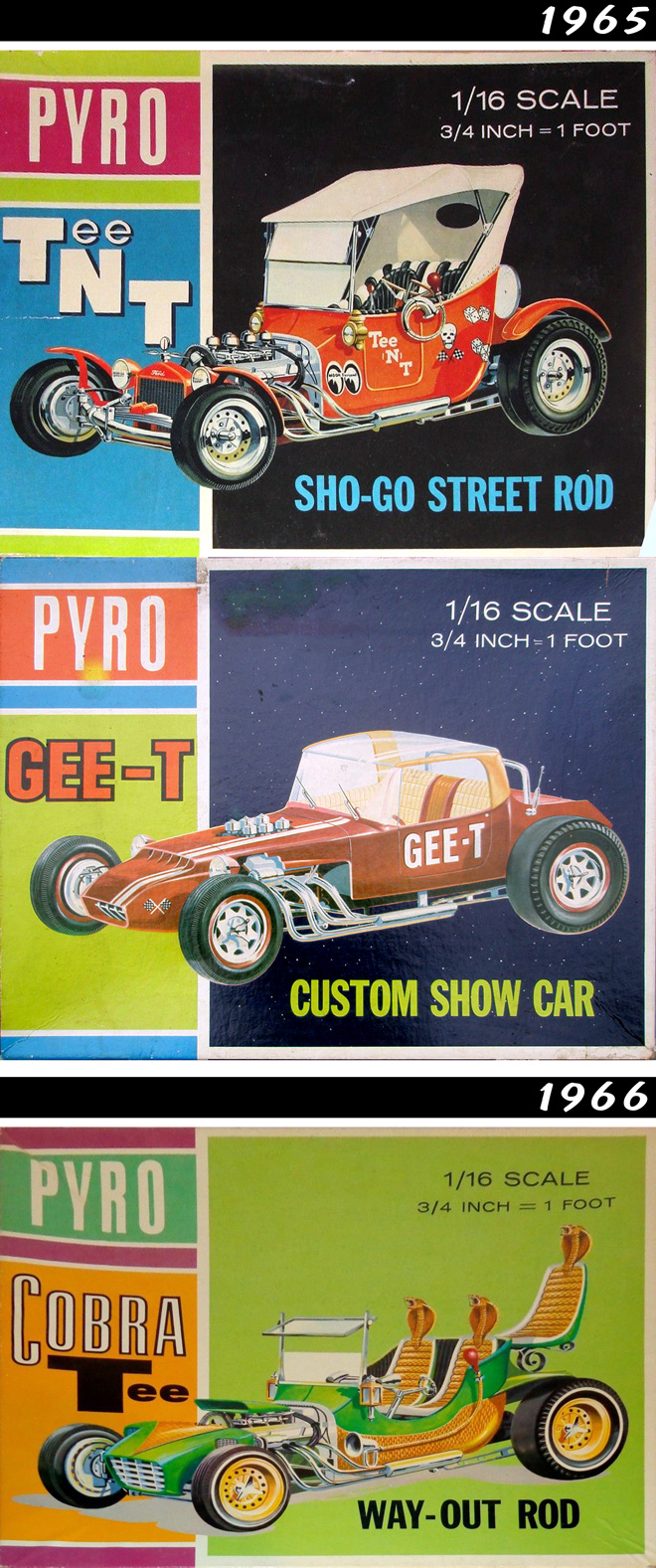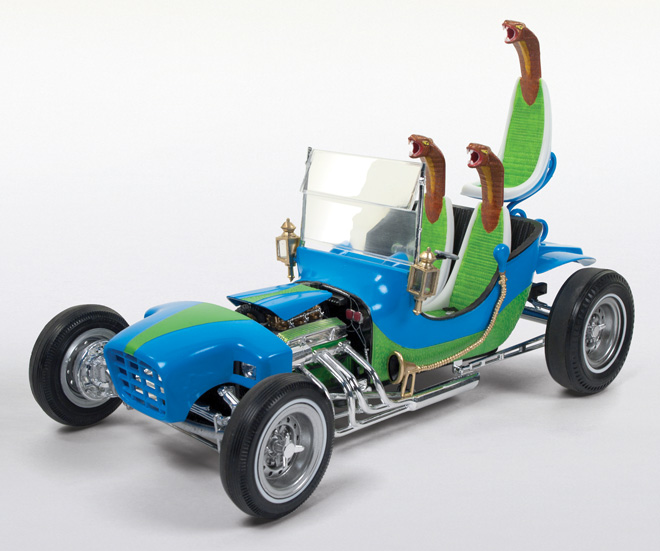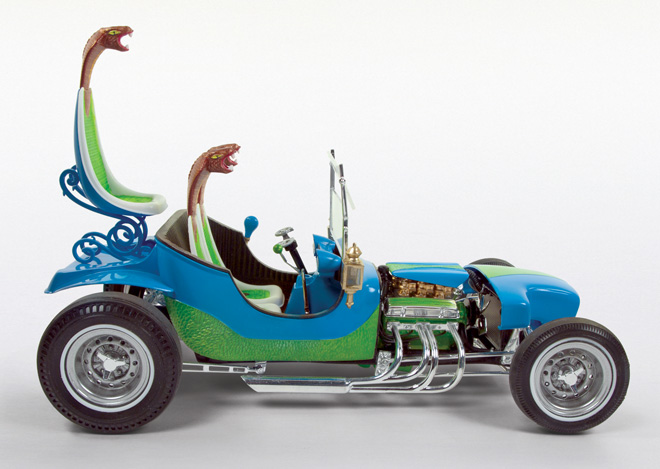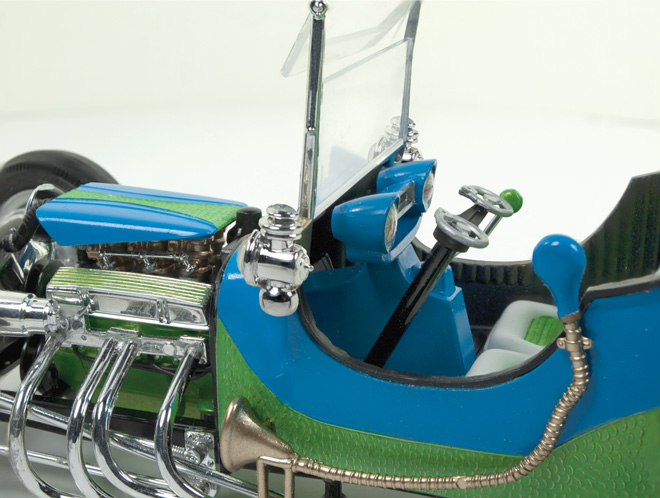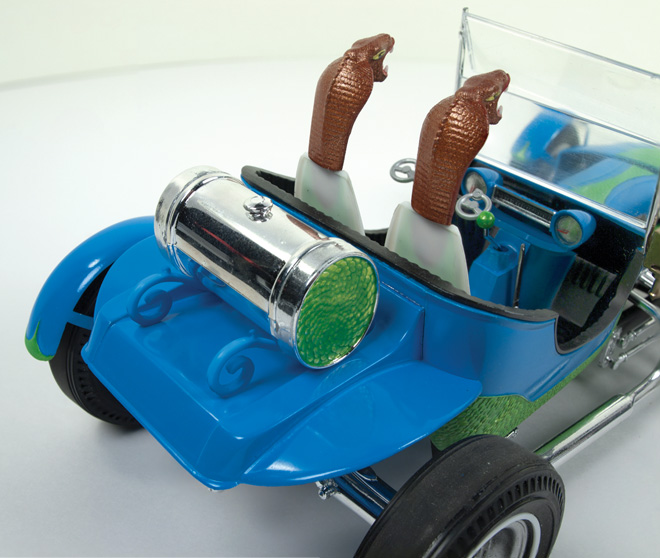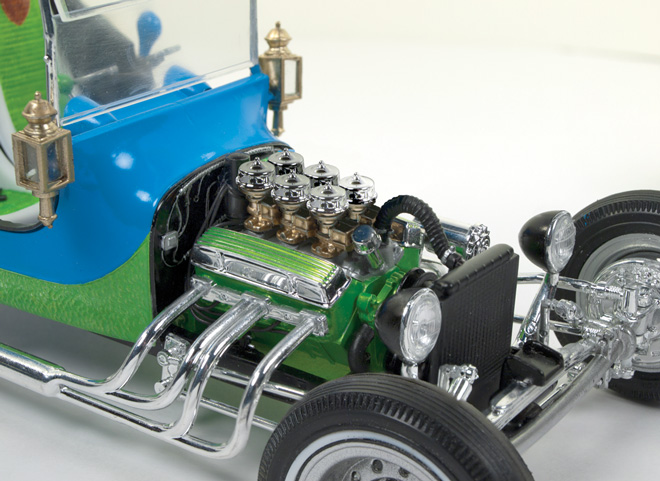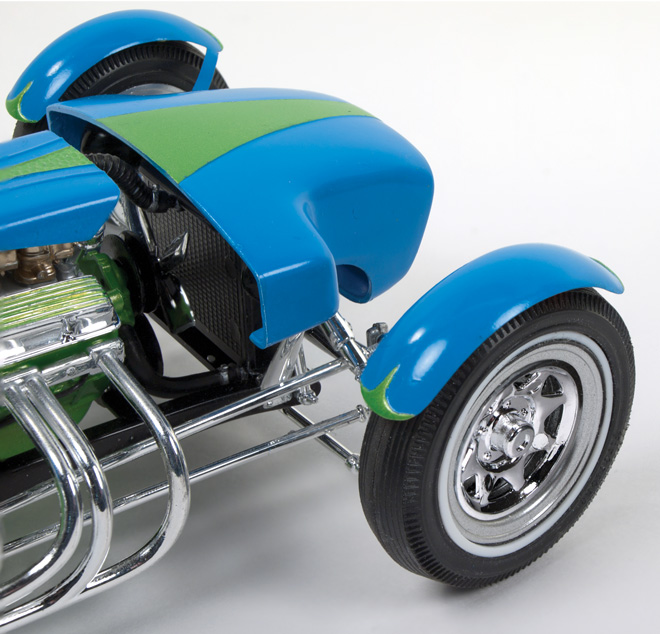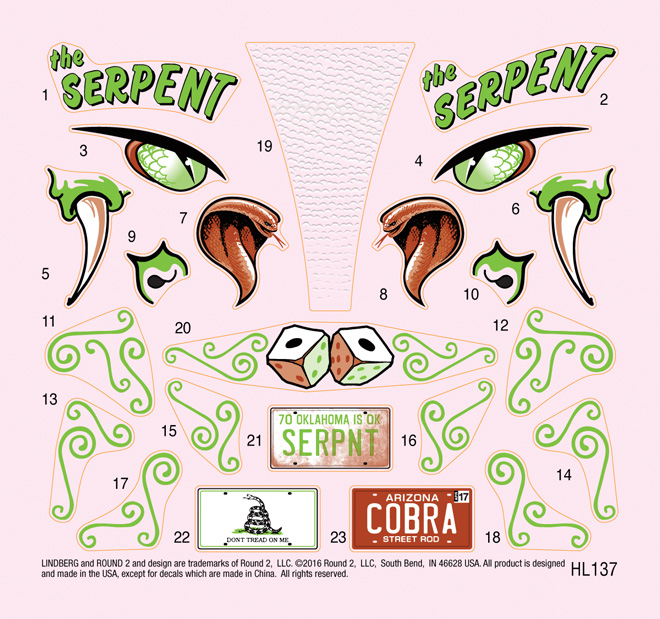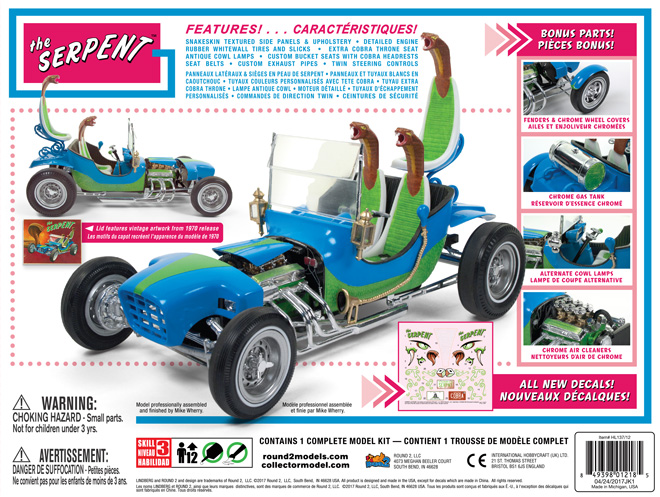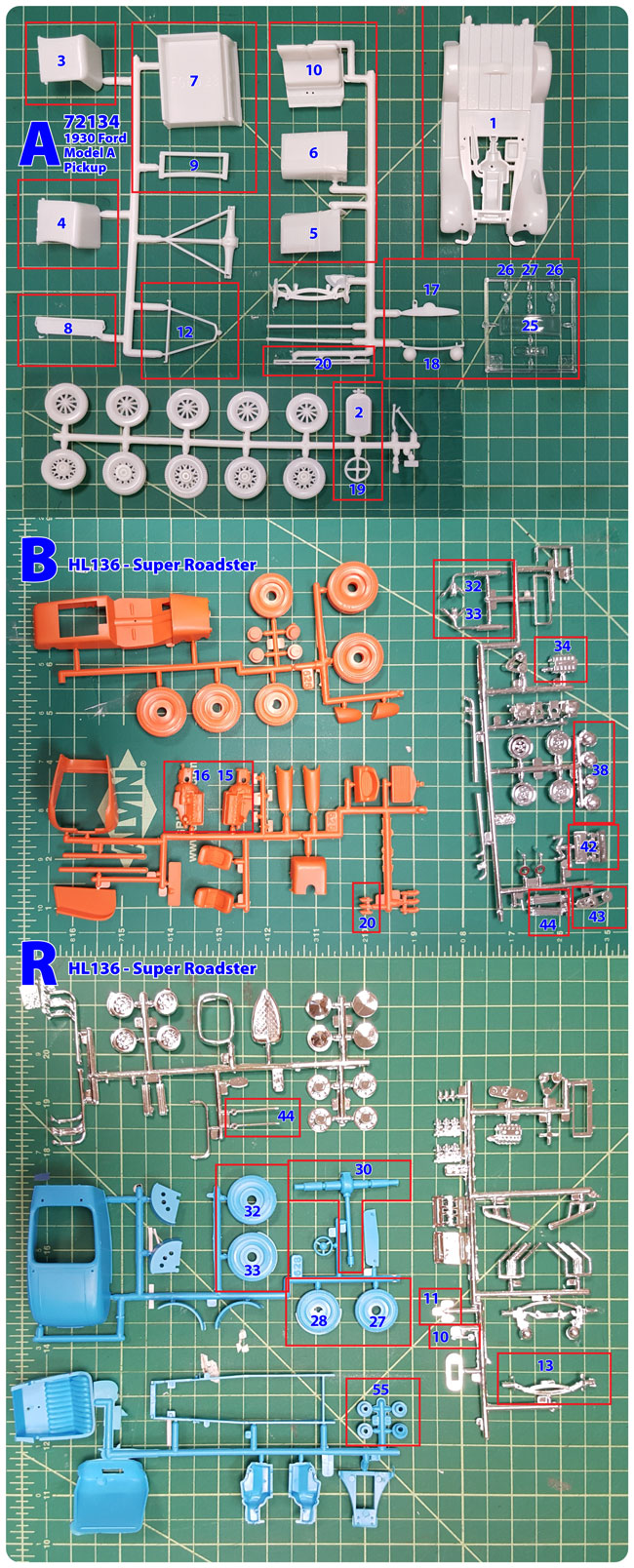

Posts Tagged ‘Lindberg’
Lindberg Model kits: Jolly Roger Series: 2nd & 3rd Releases!
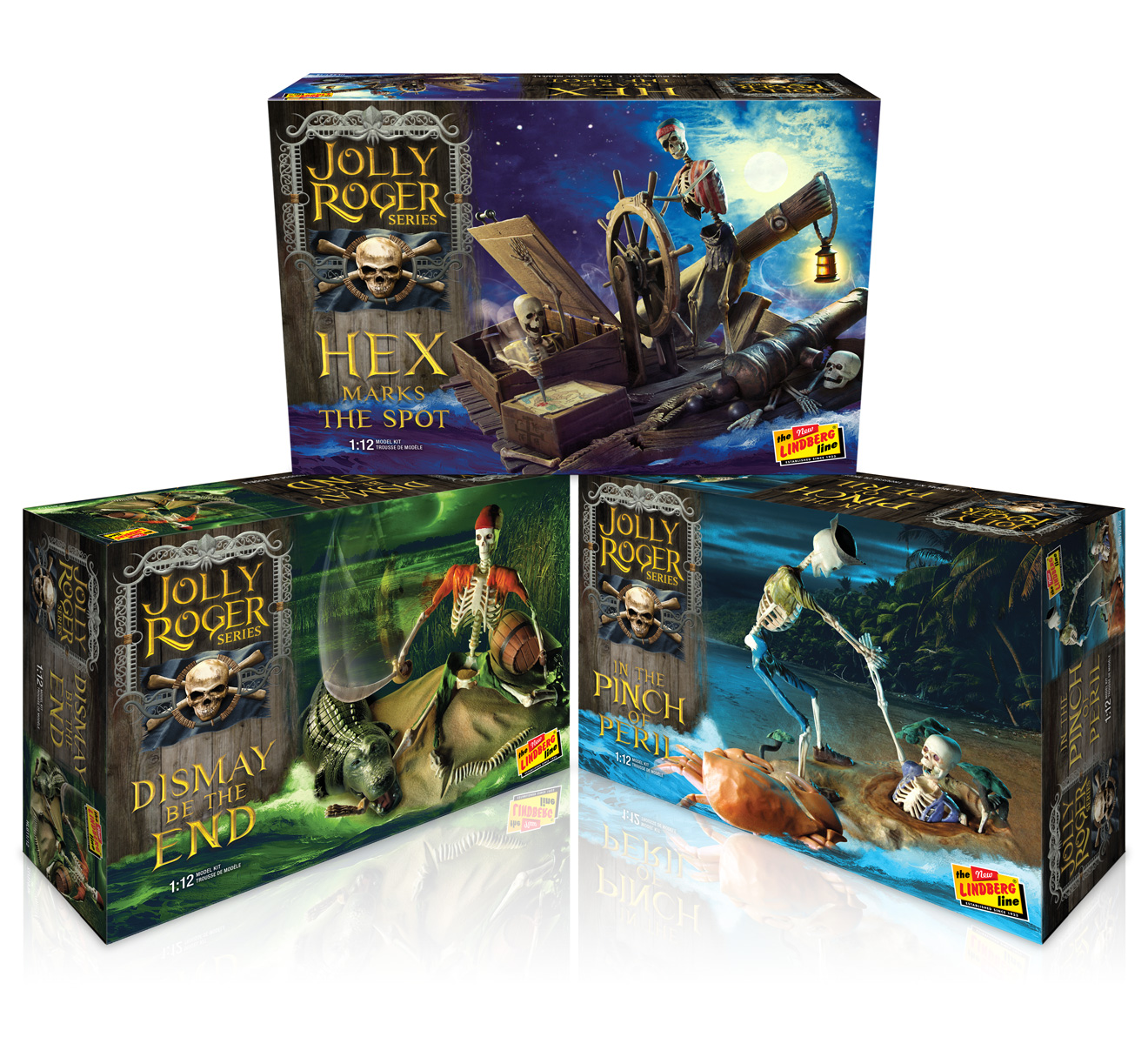
Lindberg welcomes 2 more 1:12 scale figure kits aboard Jolly Rogers. Because of the popularity of last year’s of the Jolly Roger Series: Hex Marks The Spot, not only will we be doing a second run but we are also releasing the next 2 in the series: Dismay Be The End and In The Pinch of Peril. Each kit portrays a skeleton pirate posed mid struggle within a beautifully detailed scene.
Abandoned by his crew and shackled to a stone, he was left as gator bait for “Dismay Be The End”. The pirate skeleton sits on a mound of sand, chained to a rock, guarding a barrel of grog. Strewn around him are bones and the remains of some creature. A hunger alligator is lunging for his leg. A rubber band powered sword chops at the furious beast. The kit sits at 5″ tall and 10″ wide. Bonus 1:1 pirate coin and medallion are included.
As the sand pulls him deeper, a giant crab is looking for a bite. He has found himself “In The Pinch of Peril”. The seconds skeleton tries to pull him free, but instead pulls his arm out of the socket. The kit sits at 6″ tall and 6″ wide. Bonus 1:1 pirate coin and medallion are included.
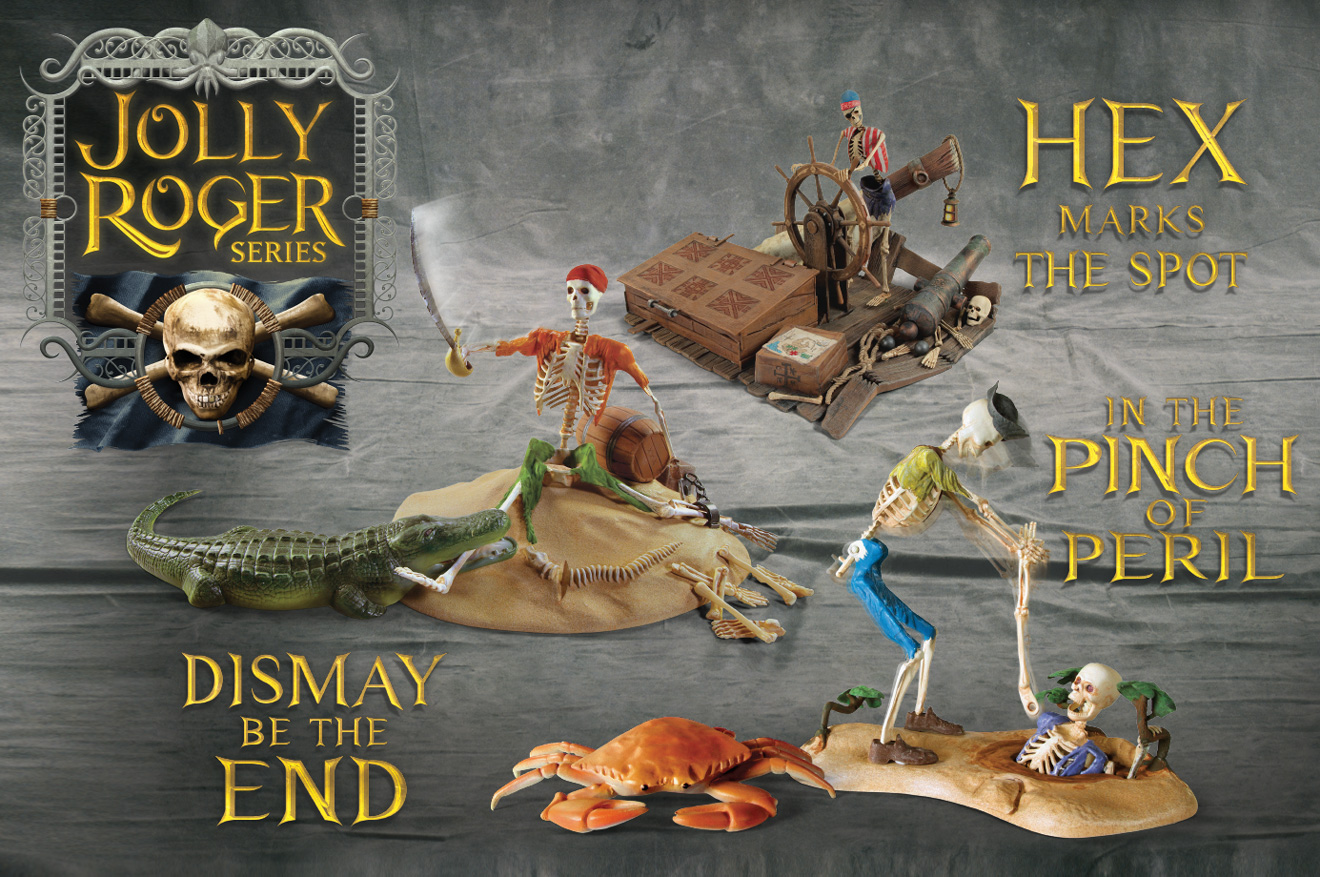
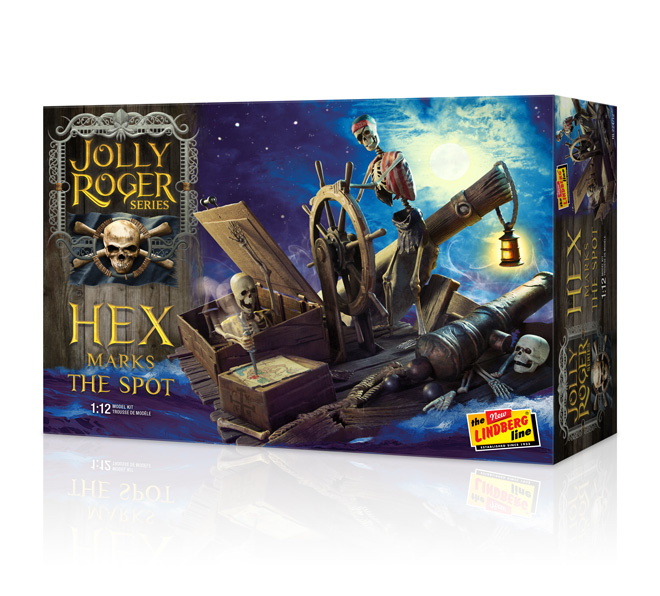
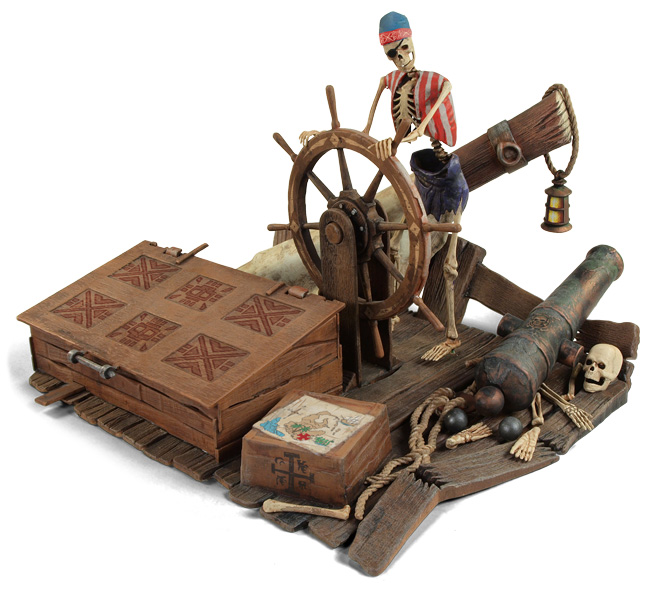
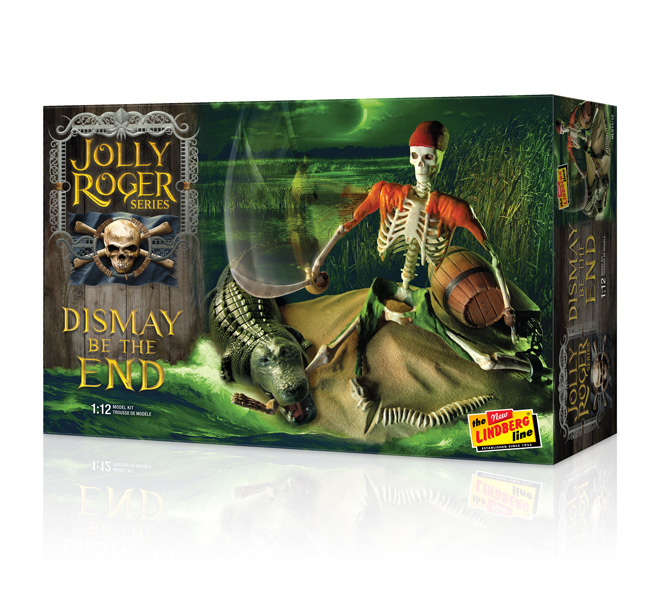
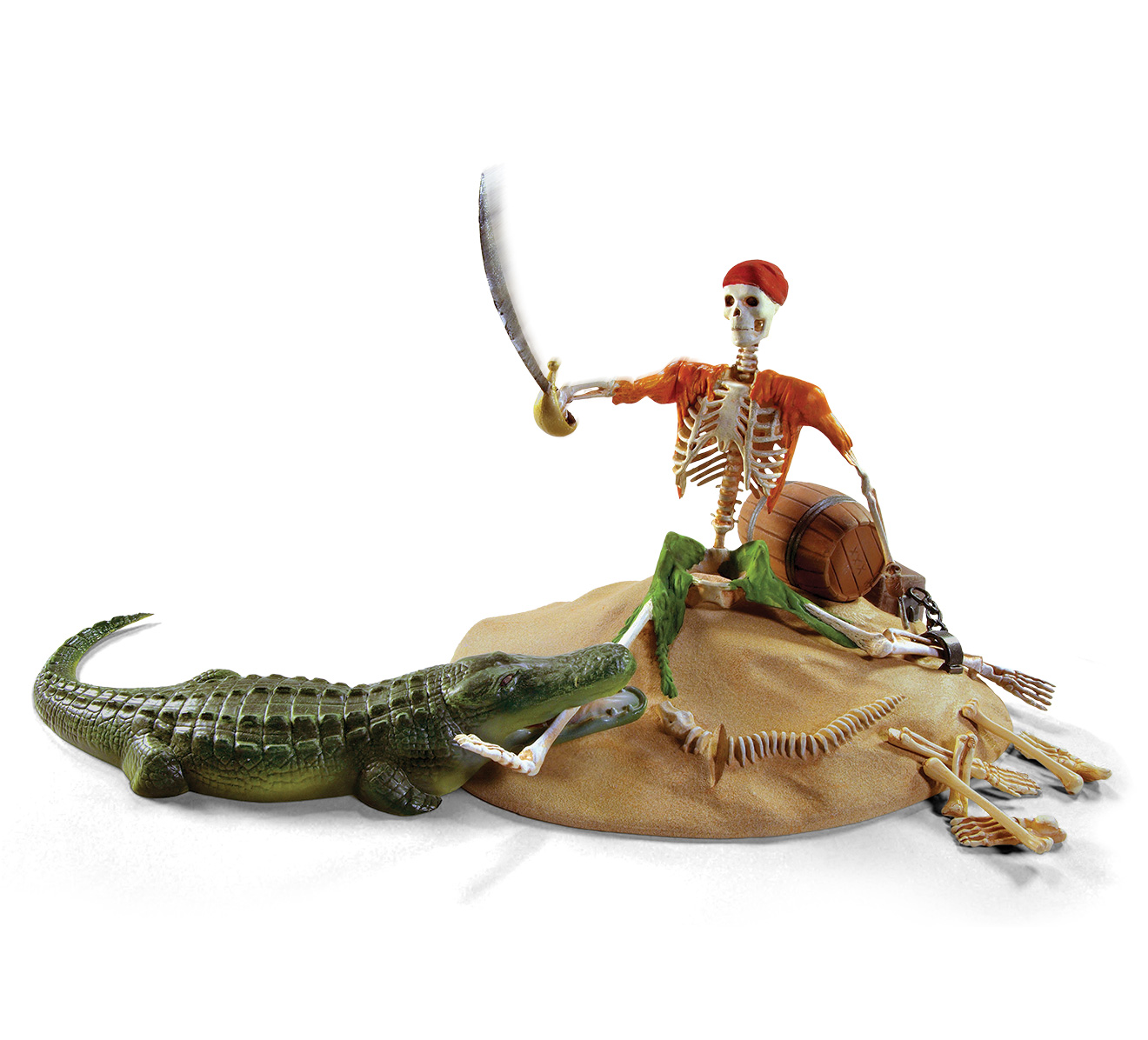
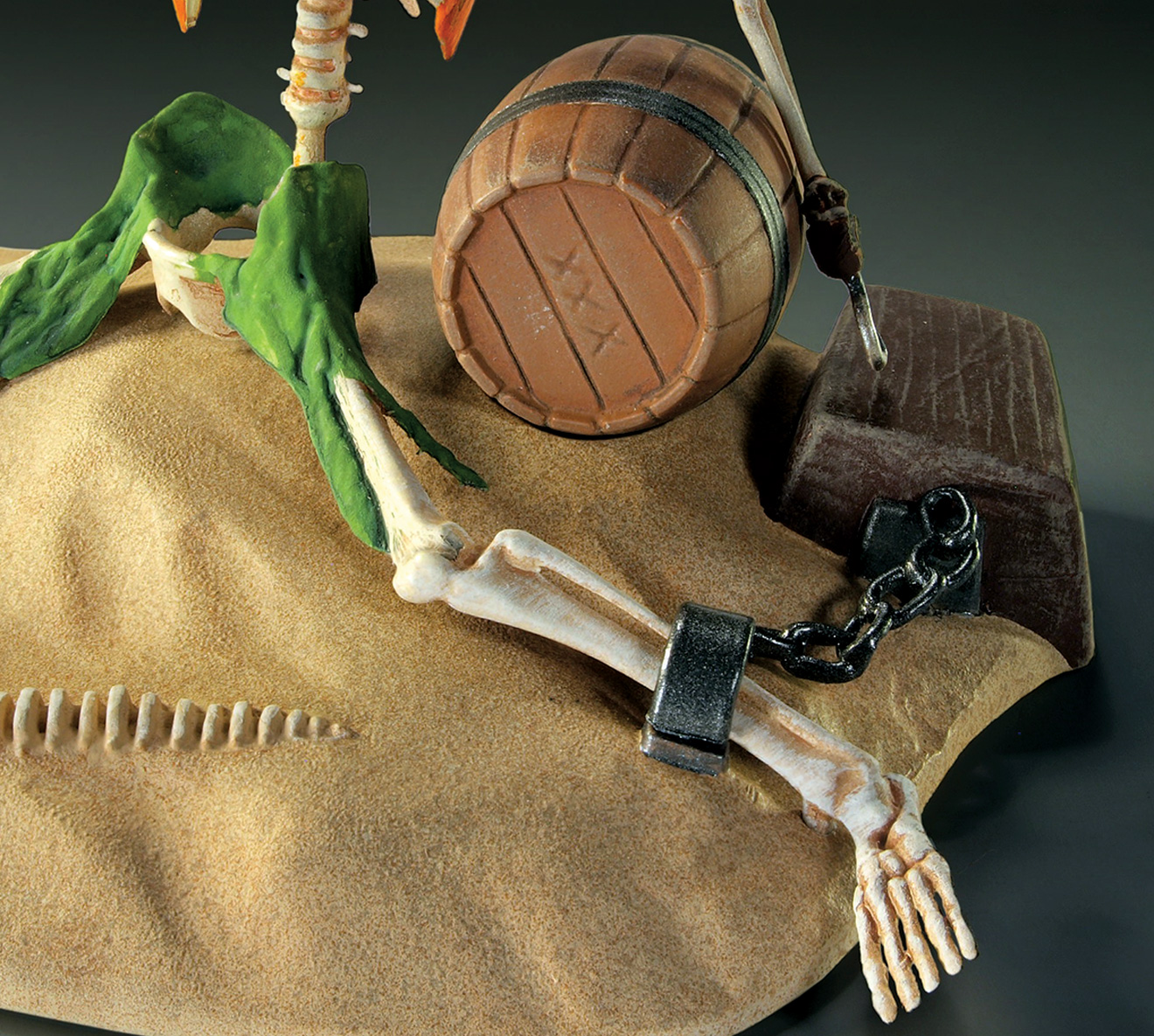
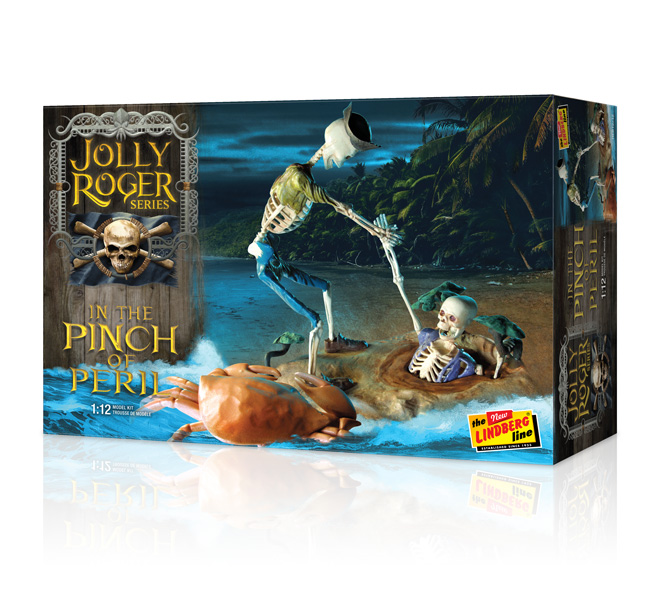
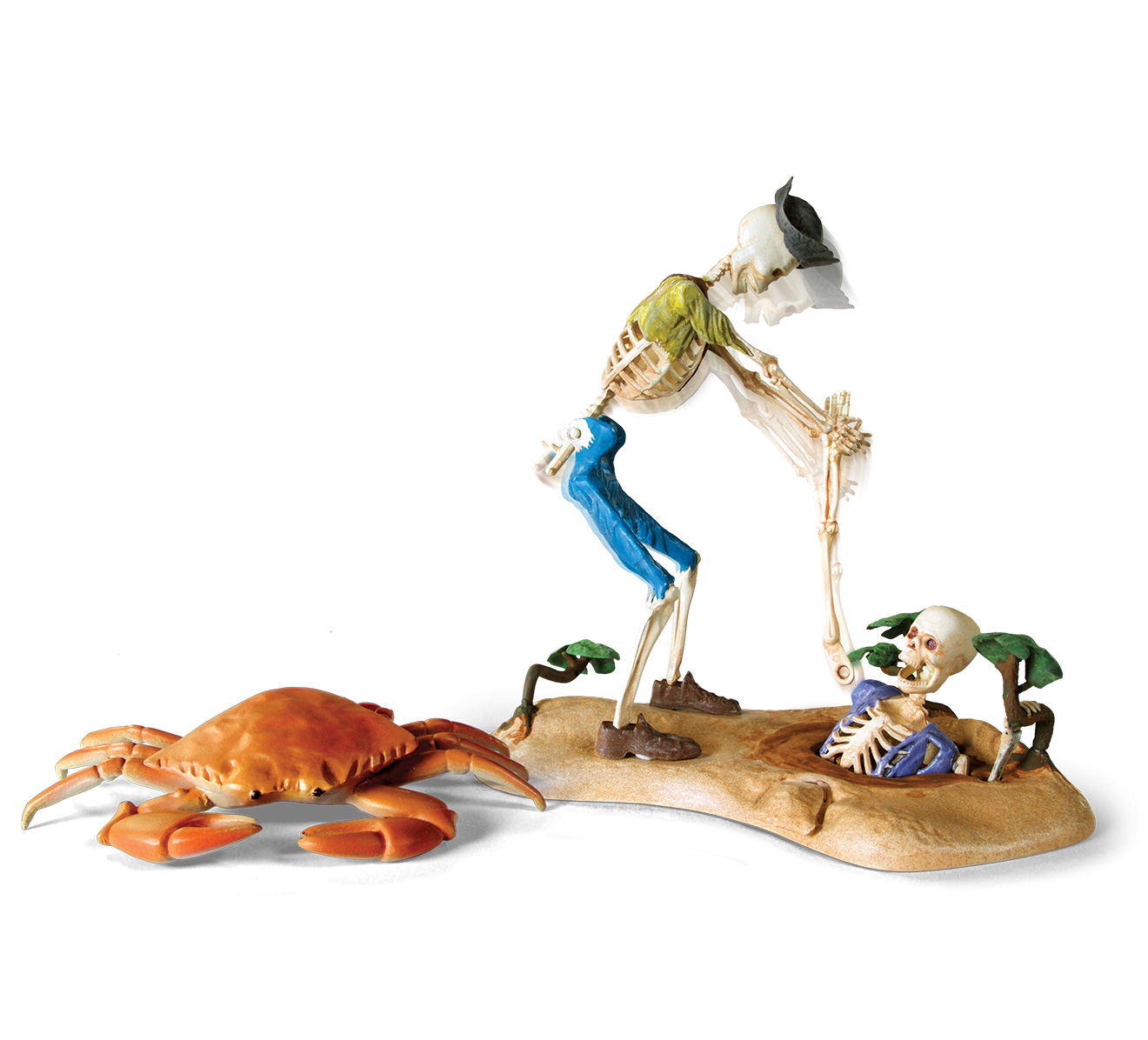
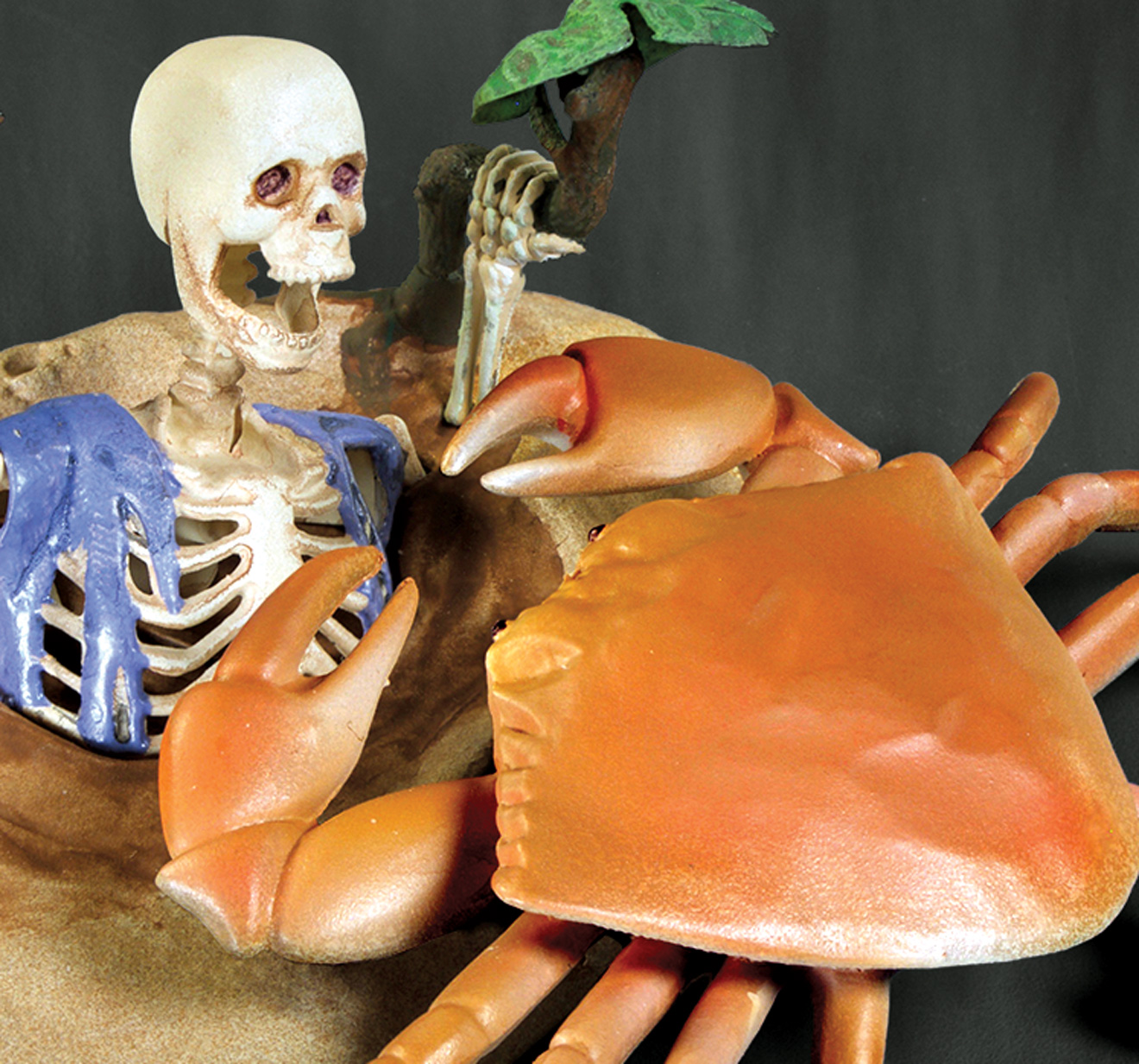
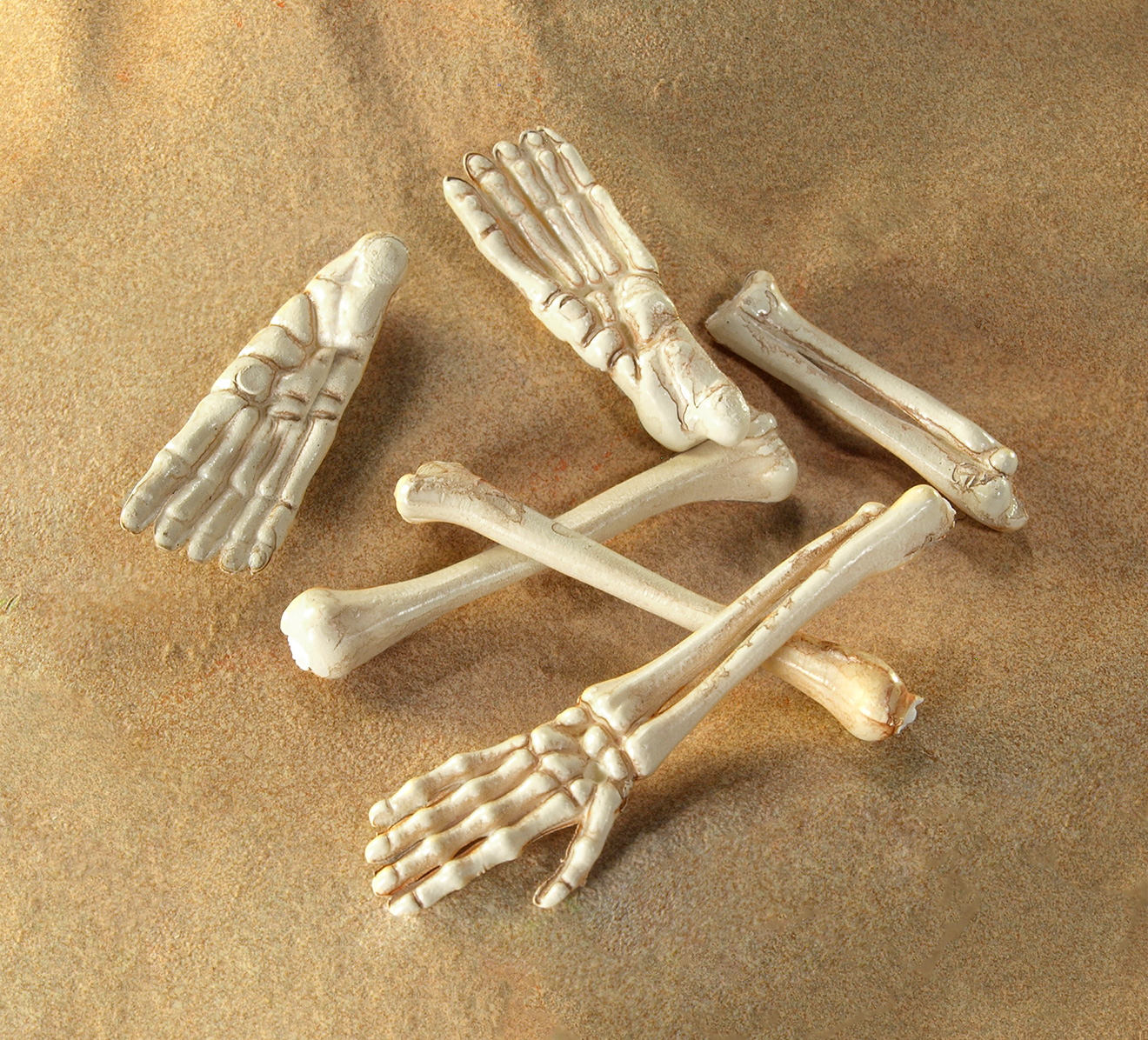
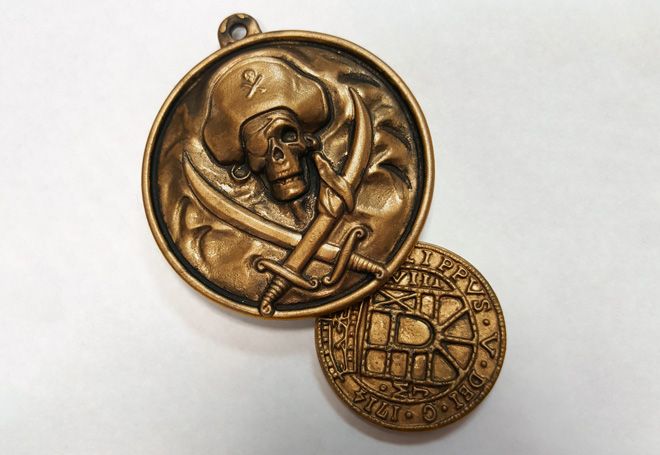
Lindberg Model Kits: Mini Lindy’s: An Illustrated History 1980s & 90s
This is the 3rd and final part of an illustrated history of the Lindberg’s Mini Lindy line based on found images, catalogs and info from some modeling sites.
In 1980 4 more garage kits were made under the Truckin’ Big series.
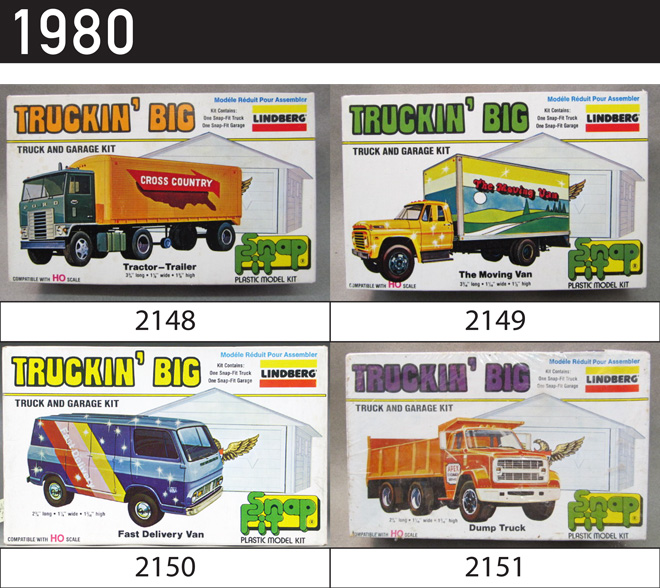
All new tractor trailer kits were made in 1982. A mix of 2 semi-trucks (GMC Astro & Ford CL-9000) and 4 trailer variations made up the 8 releases. The first 4 in these series were reissued in slightly different packaging at some point before 1987.
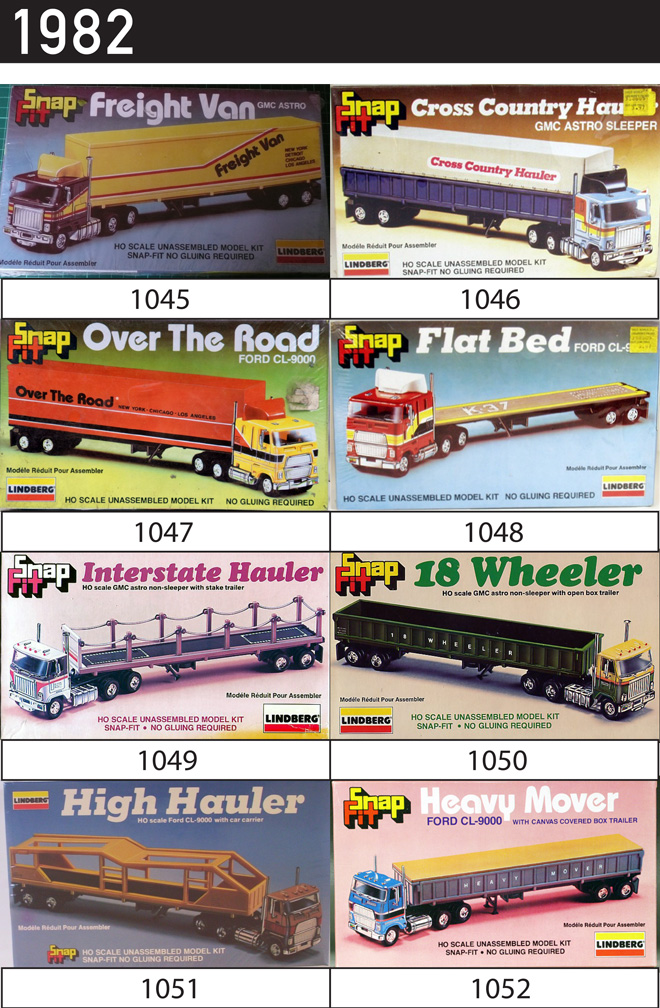
In 1984 the addition of a tanker trailer lend itself to 4 more truck kits.
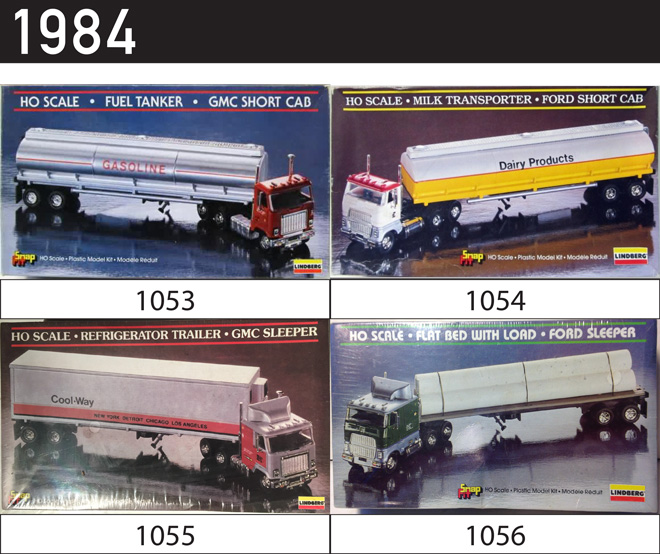
In 1990 the Miniature Mint Collection 2-packs were introduced. The 1990 catalog showed 6 kits, No. 72301-06, showing 8 previous cars and 4 new ones. Ultimately only 4 of the 6 two-packs were released. In 72303, the 1932 Ford was replaced with the newly-tooled 1990 Corvette ZR-1. In 72304, the MG-TD was replaced with the newly-tooled Lamborghini Countach. From what I can tell the 1990 Camaro Z28 and the Ferrari Testorossa were never tooled.
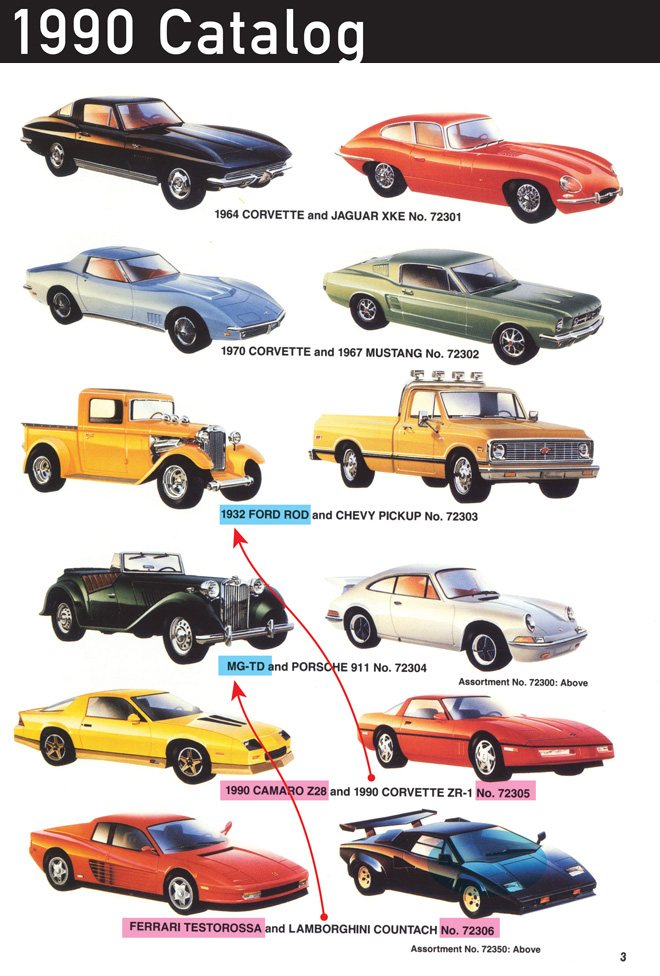
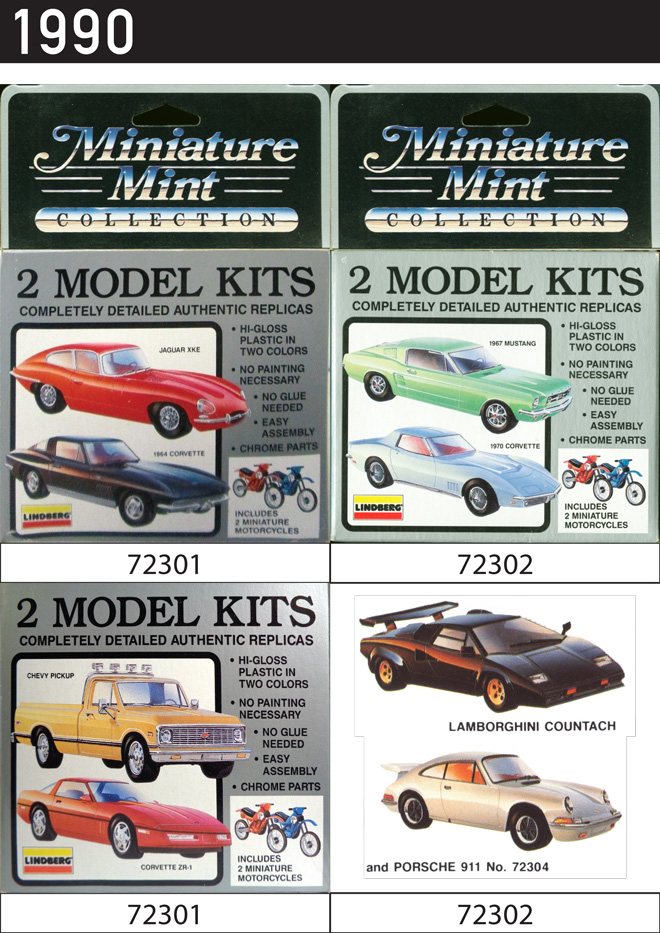
The final Mini Lindy release was the Super 8: Street Machines in 1991 feature 8 cars: 1964 Corvette, Jaguar XKE, 1970 Corvette, 1967 Mustang, Corvette ZR-1, Chevy Pickup, Lamborghini and 1968 Camaro.
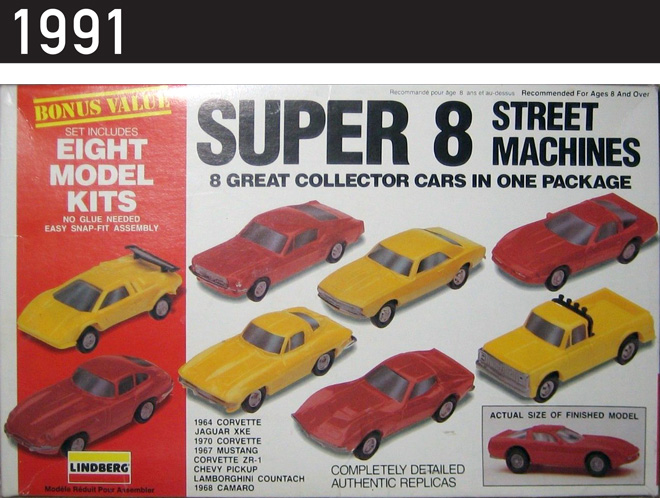
Some of the dates and images were found on these fantastic sites….
Commenters let us know……Should we bring these back? What kits do the modelers want to see?
Lindberg Model Kits: Mini Lindy’s: An Illustrated History 1970s
This is part 2 of an illustrated history of the Lindberg’s Mini Lindy line based on found images, catalogs and info from some modeling sites.
In 1970 the existing kits from the 60s were rereleased with new packaging and item numbers; 8 under the name 1971 Hot Shot and 8 under the name Mod Rod which included psychedelic flower decals. Other Mod Rod versions of previous cars were made available though a mail-in promotion; they came in plain boxes but included Mod Rod decals and instructions. These included the Porsche Carrera, the “1971” Corvette, the Ford Mustang, the Jaguar XKE and probably more.

In 1971 8 of the original trucks were rereleased under the name Big Wheels. That same year seven new cars were released under the name 1972 Super Sport. The ’68 corvette was included to round off the 8. New cars included the Cadillac Eldorado, Lincoln Continental Mark III, Chevrolet Vega, Buick Riviera, Gremlin, Monte Carlo and Pontiac Grand Prix (in catalog as Grand Ville). The Super Stock series are some of the more difficult to find Mini Lindy kits. One interesting thing to note is that the Pickup Camper was a Ford now it is a Chevy. The box art is the same as the 1960s but has been altered slightly. I believed the pickup was altered for a dealer promotion, because the Camper can be found in pink & orange striped Chevy promo boxes. The chrome grilles look different but the bodies are similar enough that the tool may have just been altered. It still has the number 22 on the underside of the body.

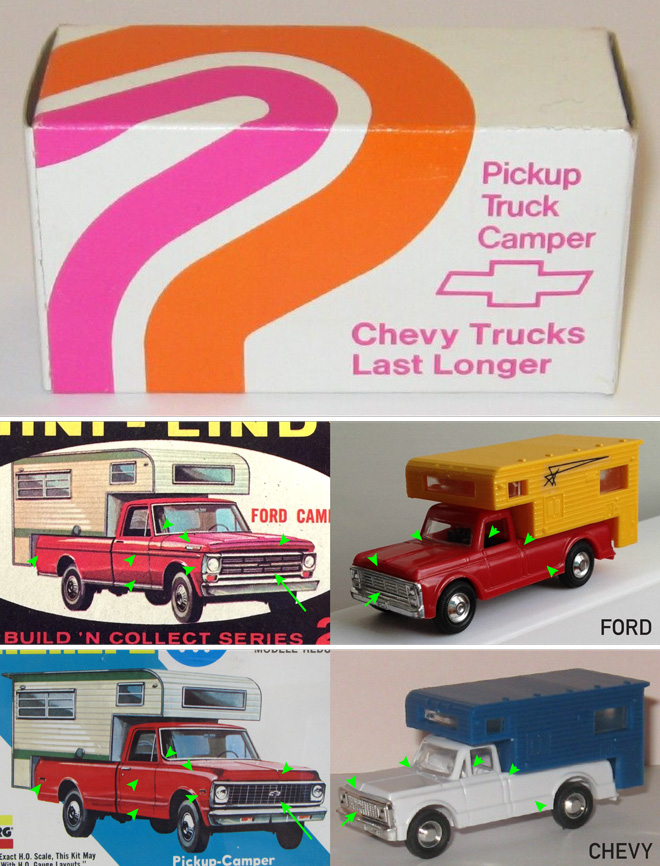
In 1972 some of the trucks were released in 2-packs.
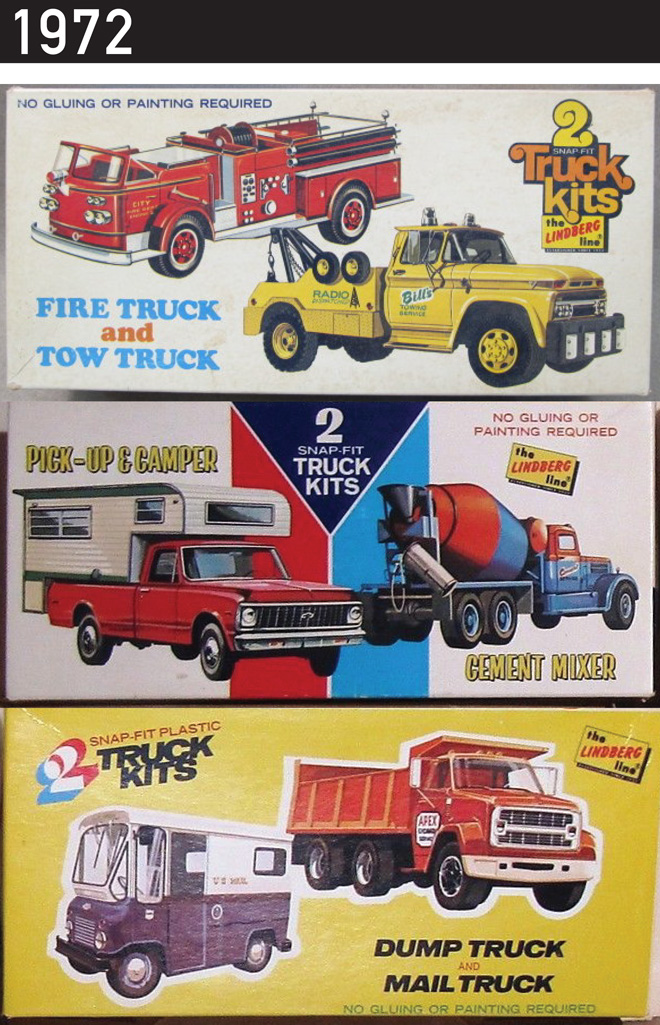
In 1975 10 trucks, vans and bus were released under the Hi Rollers series. The back of the packaging showed all the releases except for the 2 buses.
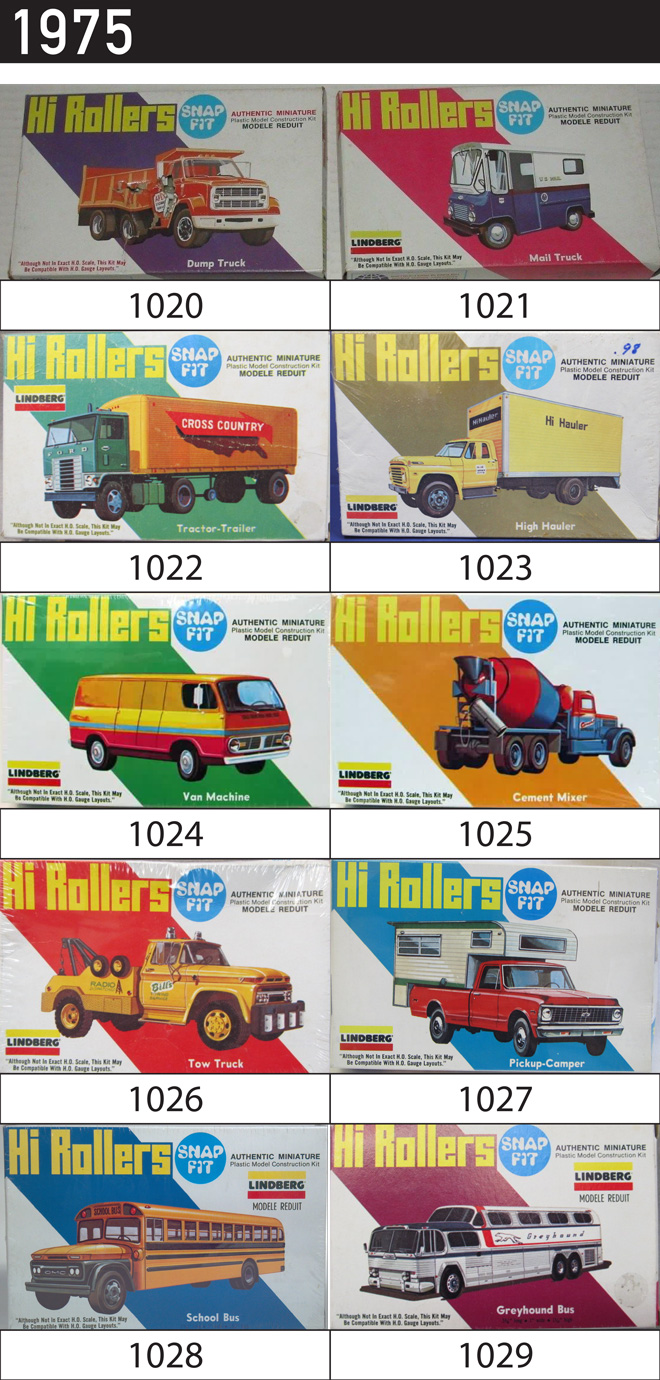
In 1976 8 cars were rereleased in the Speedy Wheels series.
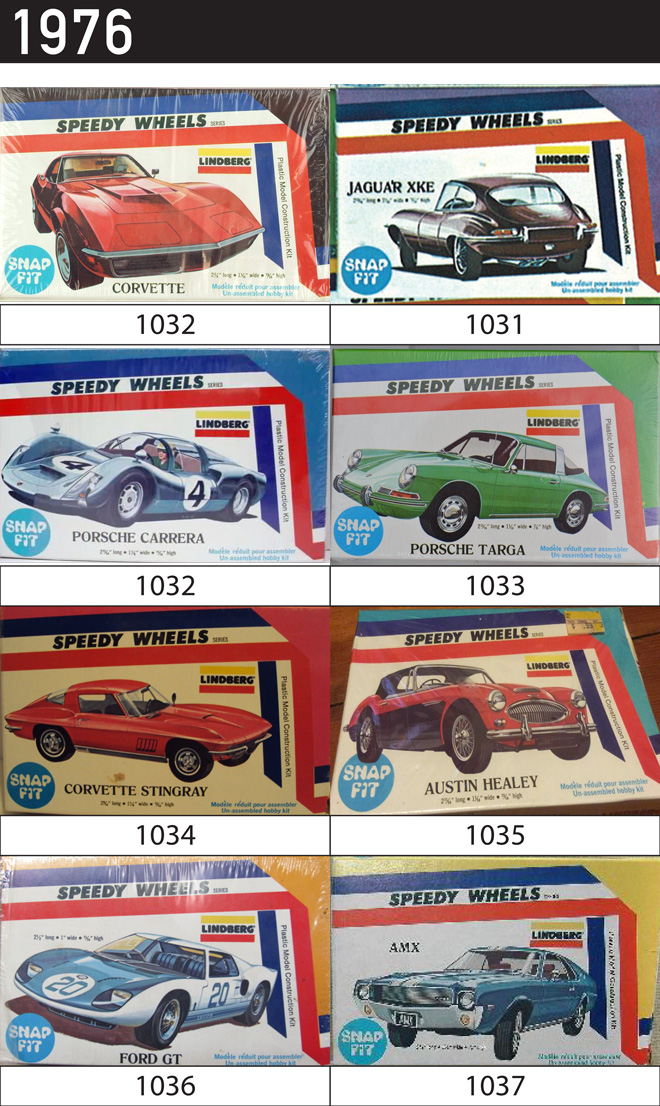
In 1977 the Van Go series added a new twist to 8 previous cars with bold graphics and glitter in the injection plastic.
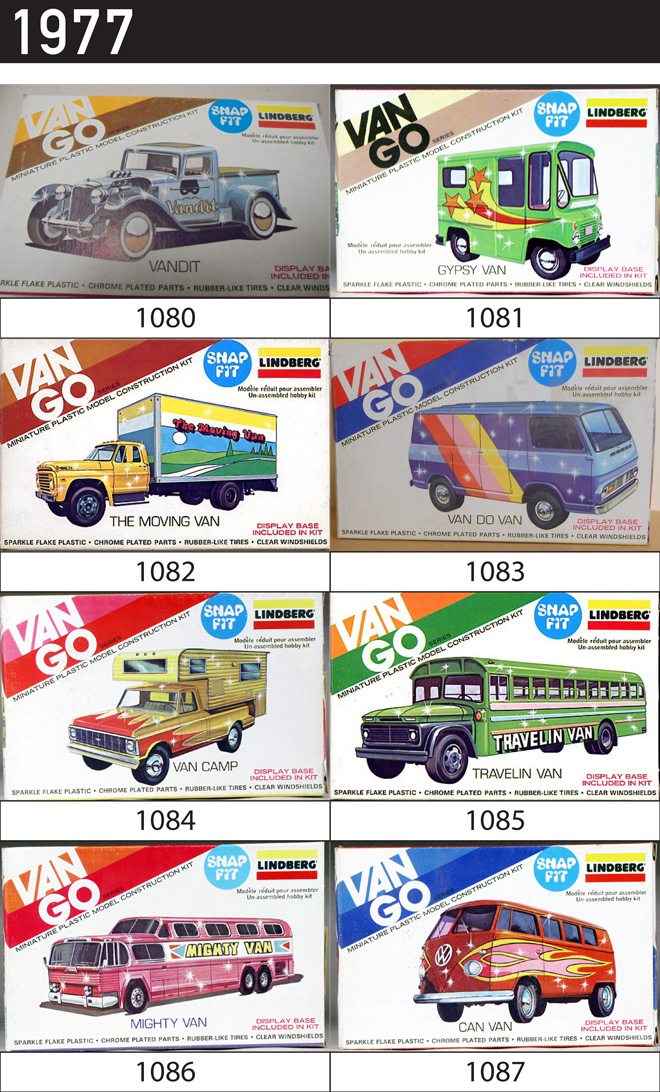
In 1979 the Car and Garage Kit series include a plastic garage with windows and an opening garage door. The Cadillac Eldorado and Lincoln Continental Mark III returned for the first and last time.
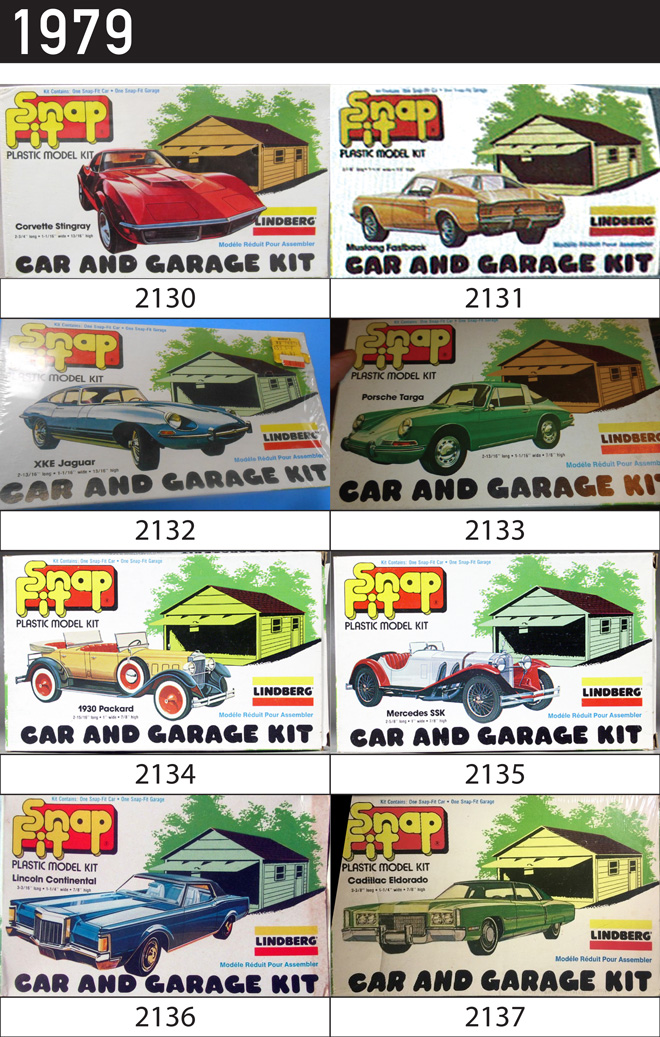
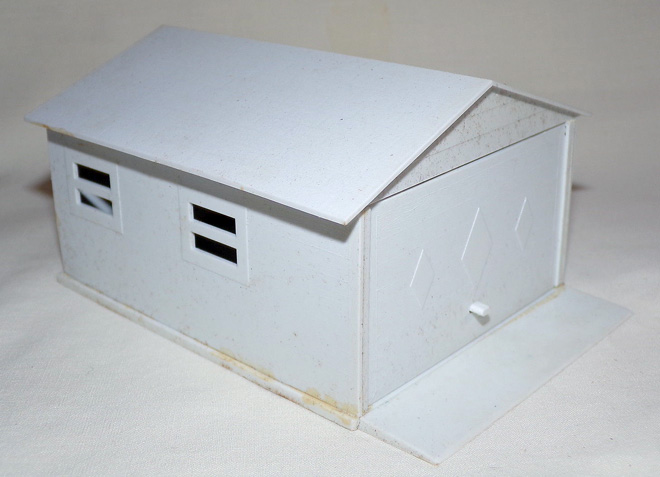
Look for my next post for part 3 – the 80s & 90s.
Some of the dates and images were found on these fantastic sites….
Lindberg Model Kits: Mini Lindy’s: An Illustrated History 1960s
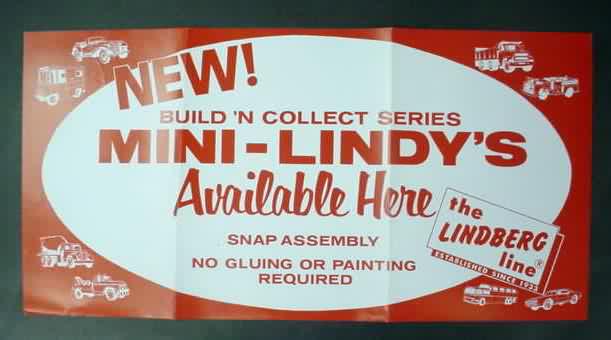
This is an illustrated history of the Lindberg’s Mini Lindy line based on found images, catalogs and info from some modeling sites.
Part 1 – 1960s
The first 24 Mini Lindy cars were produced between 1967 and 1968 with the first 16 appearing in the 1968 catalog. The vehicles were HO scale plastic kits that included clear parts, chrome parts, metal axles, rubber tires and a decal sheet. They came in black boxes with the model illustration appearing in a white oval. On the reverse side appeared a rear view of the vehicle. Three variations on the packaging appeared: a basic box, box with a flap for hanging and a cellophane version that was just the basic box with the back illo cut out. On the back of the flapped version was a list of kits numbered 1 to 32, though at that time only 24 had produced. The list also changed a bit on kits 17-24.

In 1969 7 “red box” kits were released; kits were numbered 25 to 31. An oddity… #32 Ryder Moving Truck appeared in a black box. Not sure of the release date but given that the kits were released in groups of 8 generally I would think this would have been released with #25-31, but I don’t know. The list on the flaps changed again to reflect the final 32 kits. Seems as though #25 Pontiac Firebird, #28 Jaguar D, #29 Bobtail T, #31 Station Wagon Vista-Cruiser, #32 Stake Truck, and #32 Oil Truck were unproduced. The 1969-70 catalog still only showed the first 16 kits.
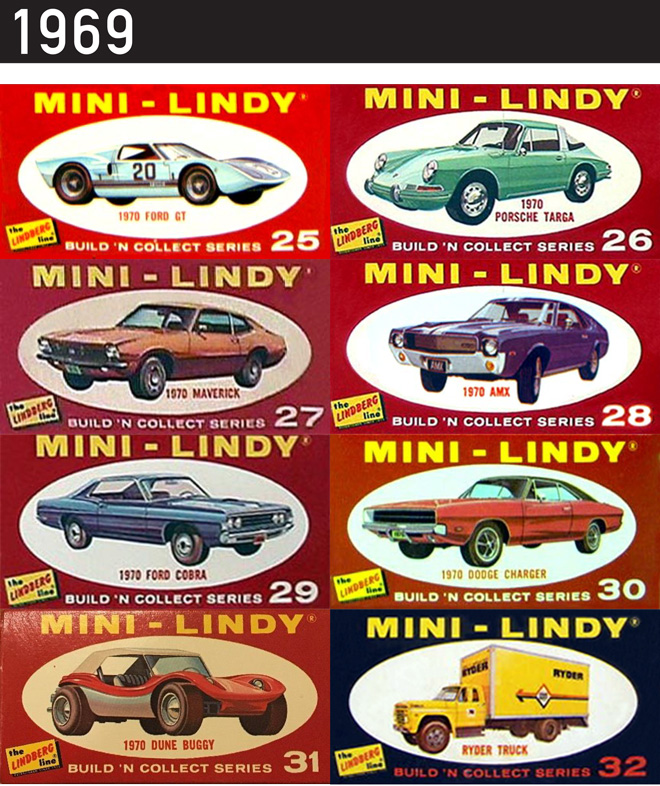
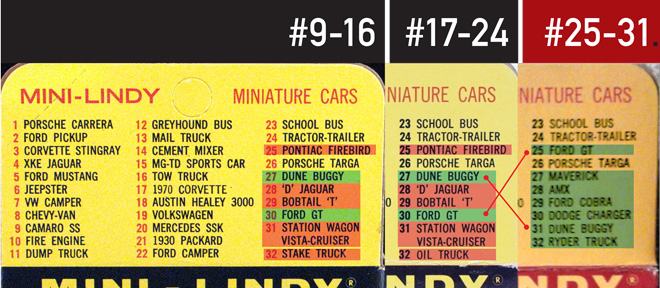
Look for my next post for part 2…….
Some of the dates and images were found on these fantastic sites….
Lindberg Model kits: Big 1/16 Scale Serpent Sho-Go Rod!
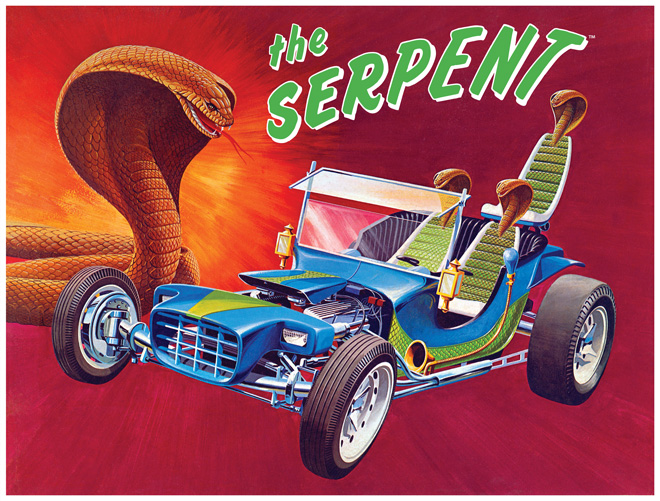
After 47 years and some tooling work the Serpent Sho-Go Rod is ready to roll again! The kit has had quite a few variations over its long history. The first appearance was in Pyro’s 1965 catalog as the TeeNT Sho-Go Street Rod and the Gee-T Custom Show Car. The Serpent variation first appeared in 1966 as the Cobra Tee Way-Out Rod.
In 1970 skis where added to the Gee-T and it was re-christened as the Sno-Skeeter, the Cobra Tee became the Serpent, and new parts were tooled for the 4th version – the Laramie Stage Ghost. In 1979 Lindberg released the TeeNT as the Bull Horn Street Rod. Supposedly, it was renamed as such because, when loonies at Lindberg obtained the tooling, they thought that the horns from the Laramie were meant to go with the TeeNT.
The Serpent is a big, fantastic rod at 1/16 scale. It sits at over 8 inches long and 5 1/2 inches tall. The kit features snakeskin textured side panels & upholstery, detailed engine, rubber whitewall tires and slicks, an extra cobra throne seat, antique cowl lamps, custom bucket seats with cobra headrests, seat belts, custom exhaust pipes and twin steering controls. Parts will come injected in blue, black and clear. Alterations to the kit include improving the way the bucket sits on the frame and adjusting the stance of the 3rd seat to better match the box art.
For those wanting a more custom look the Serpent comes with a slew of bonus parts including front & Rear fenders, chrome wheel covers, chrome gas tank, alternate cowl lamps, and chrome air cleaners. An all new feature for the Serpent is a large, snake-themed decal sheet. Slithering your way this May!
Lindberg Model kits: Jolly Roger Series: Hex Marks the Spot!
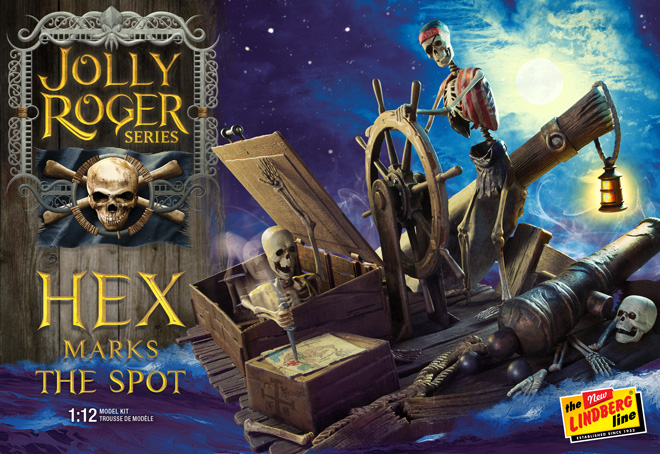
“Set adrift and drudges weak
Pursuit of yer gold and sapphire lot
What ye find is not what ye seek
When a HEX marks the spot.”
Emerging from the depths of the Round 2 tooling bank comes a new addition to Lindberg’s Jolly Roger Series. Hex Marks the Spot begins a haunting lineup of 1:12 scale figural kits. This memorable kit from 1972 stands 6 inches tall and 8 inches wide. It portrays a cursed pirate captain steering his “skeleton” crew in search of a deadly treasure. The all plastic assembly glue-together kit nearly snaps-together. The model is highly detailed and well sculpted, featuring realistic wood-grain and weathering on the deck and crates. The cannon features corrosion after spending years on the dicey sea. Additional details like cannon balls, a skull and bones are included to flesh out the scene. The model jumps to life when a second skeleton lunges from a crate with dagger in hand to pinpoint the location of the lost booty on the treasure map. A BONUS pirate medallion and coin are also included.
Decals include a massive skull and cross bones, treasure map, blue or yellow lantern glass, stripe detail for captain’s vest, decorative band for skull cap, royal crest for stolen crate, chest designs, multiple crests for the cannon and decorations for the ship’s wheel. The decal sheet even includes the poem above. Be sure to tell your usual retailer to reserve your copy!
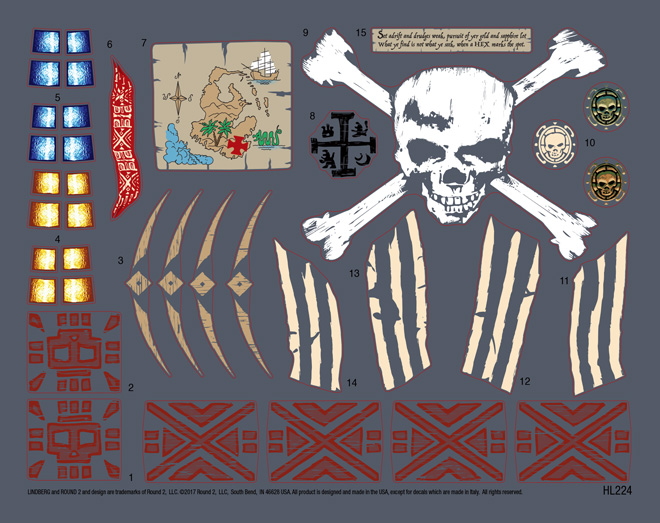

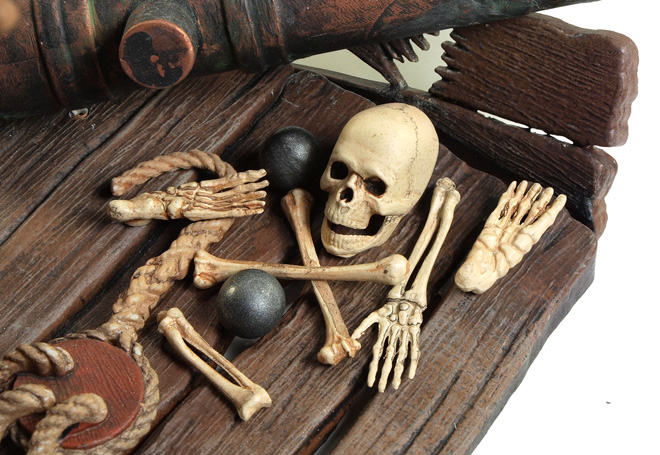
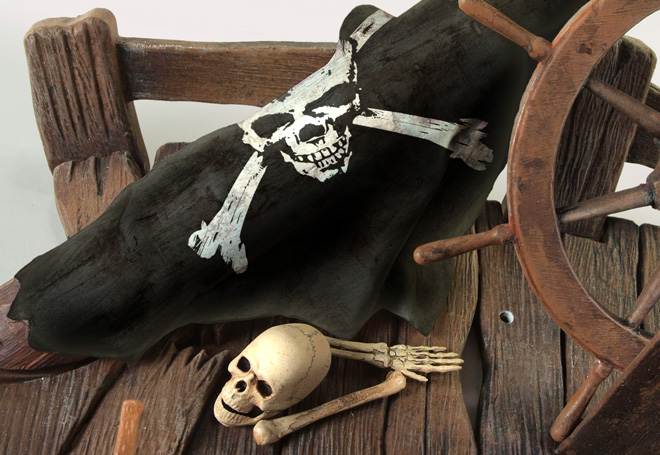
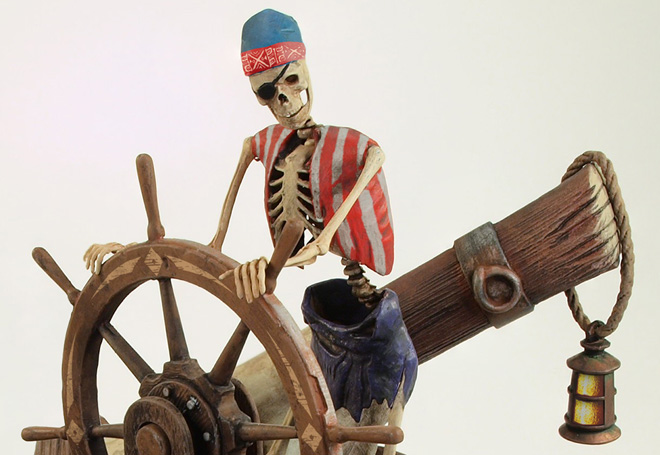
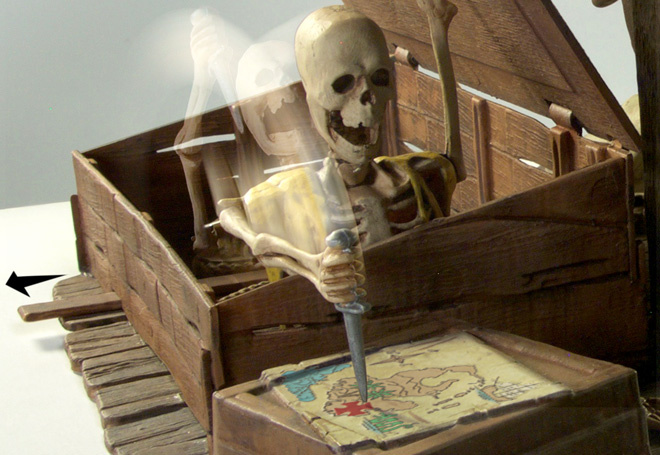


Lindberg Model kits: 5 Space Ship of The Future! Back from the Past
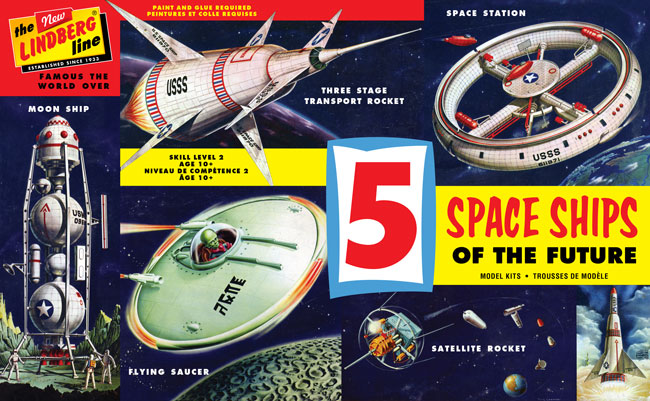
Blasting from the past is Lindberg’s 5 Space Ships of the Future. Considered to be Lindberg’s most iconic and sought after kit, the futuristic 5-pack will finally be available for the first time since its originally release way back in 1958. Along with 5 complete model kits, the release will features vintage boxart, retro-inspired decals, and a few new twists. The 5 decal sheets are remastered from the 1958 versions but with a better fit and details, and include all new decal options inspired by the kits rich histories. Also for the first time ever parts are injected in a spaceship grey.
The all new full color tray features amazing models painted, assembled and photographed by E. James Small. Check out more of his work at smallartworks.ca.
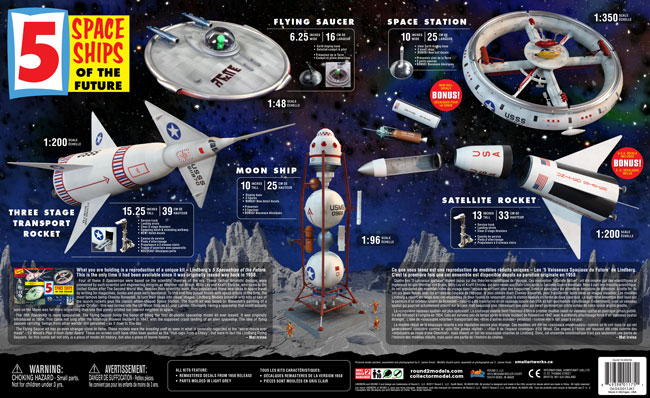
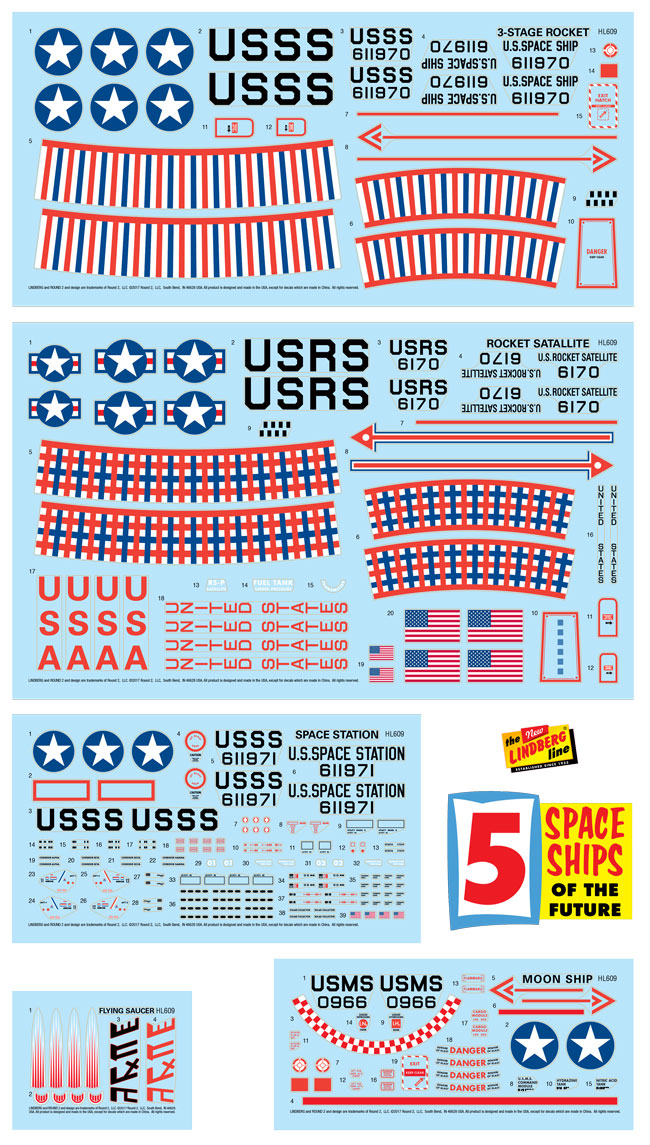
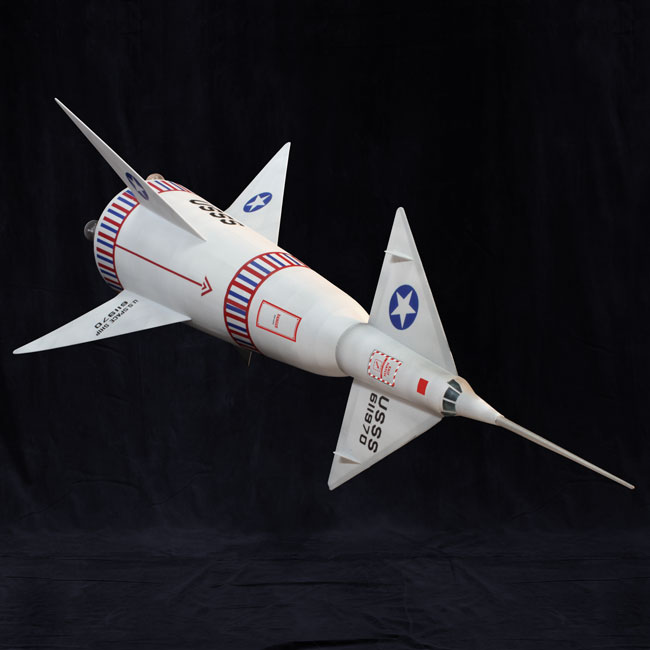
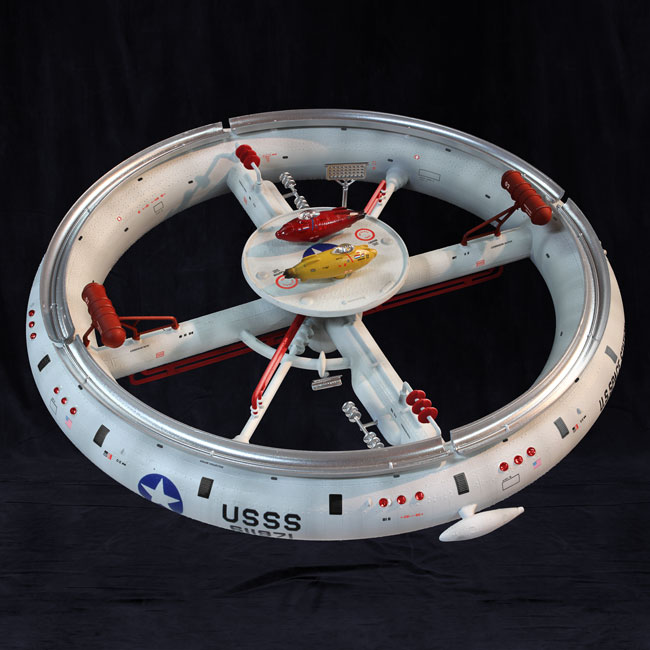
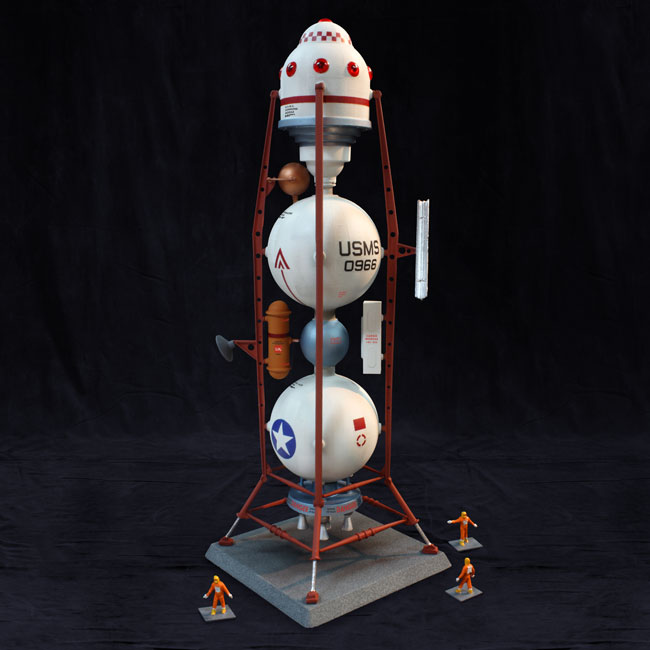
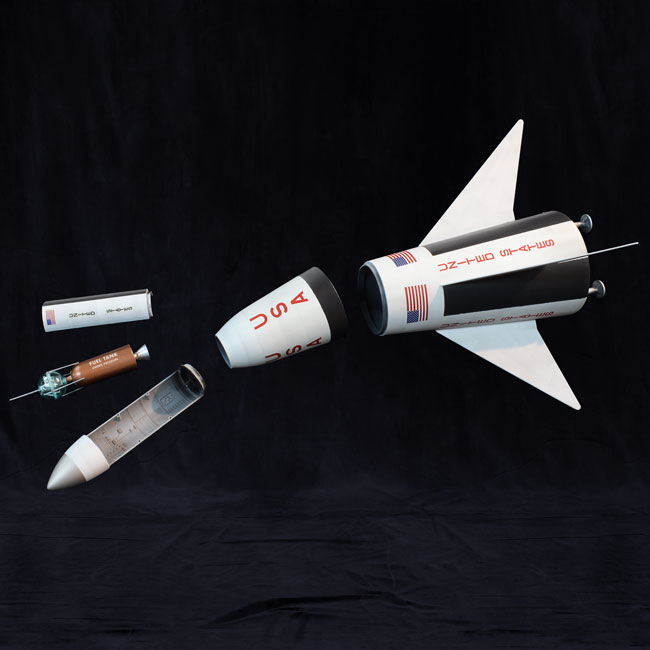

1:32 Kitbash: 1930 Ford Model A Roadster Pickup – Part 3

This is the final part of my 1930 Ford Model A Roaster Pickup kitbash using the Lindberg 1:32 Customizable Show Rod 2-pack and Lindberg 1:32 1930 Ford Model A Pickup.
Parts are painted, now it is time for assembly.
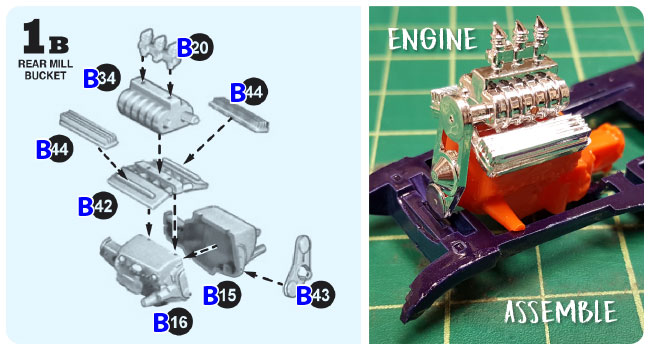
As mentioned in part 2, I assembled the motor using the “Rear Mill Bucket” instructions. As shown above.
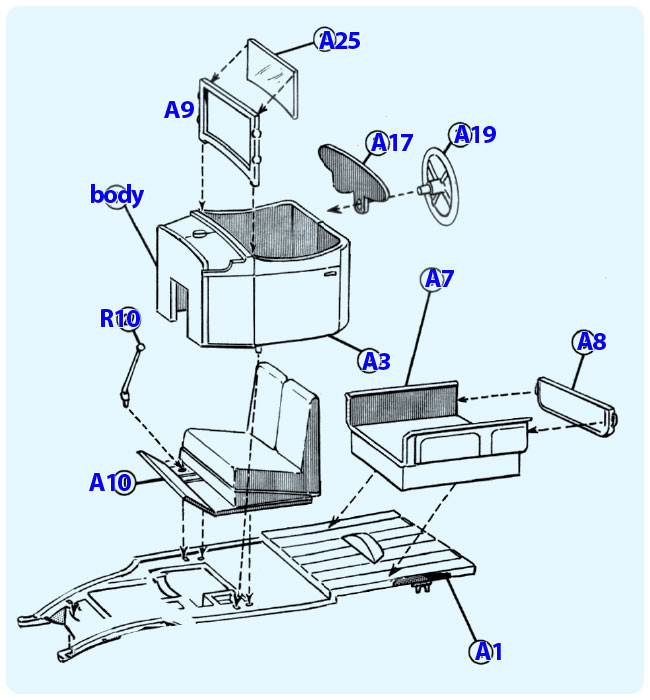
Next I assembled the frame (A1), body (A3+A4+A5+A6), dash (A17), steering wheel (A19), windshield (a9), glass (A25), bed (A7a), grille (A2), tail gate (A8), and interior of the cab (A10) as shown in the Model A Pickup instructions. I replaced the gear shift with the chromed one from the Super Roadster (part R10).
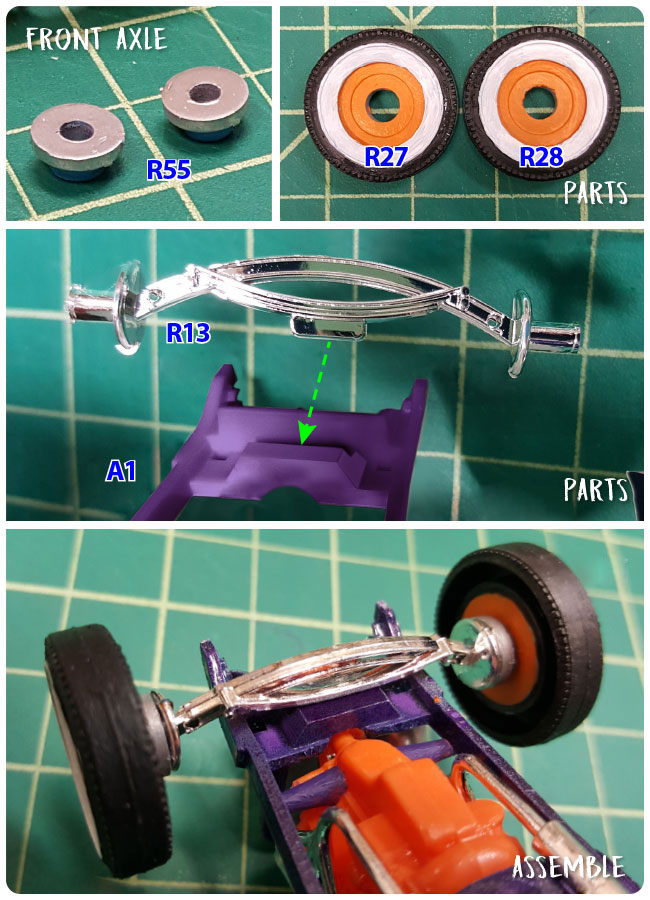
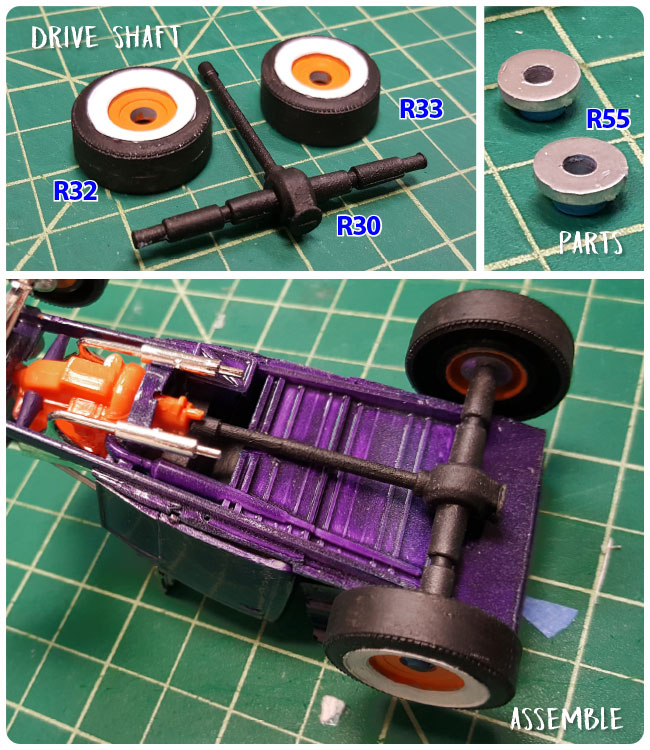
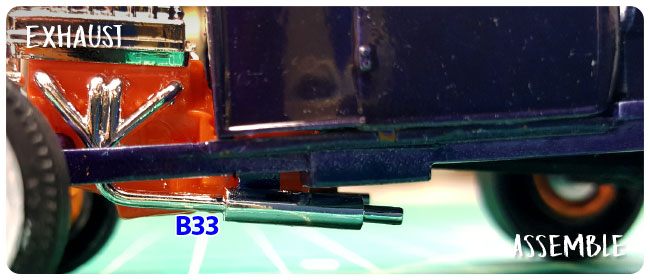
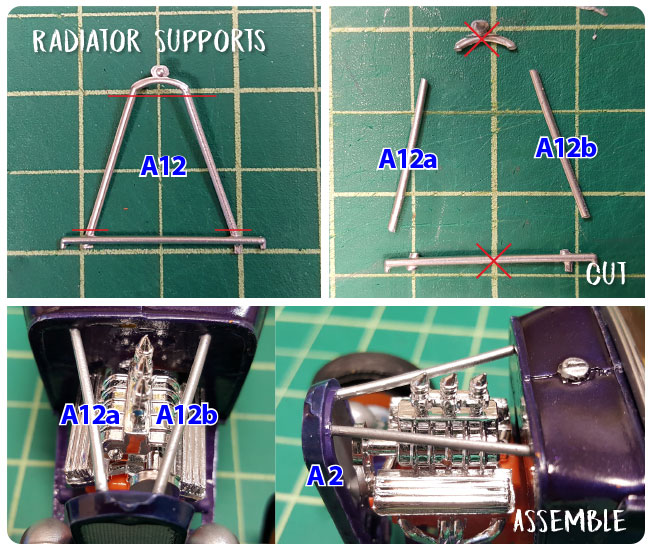
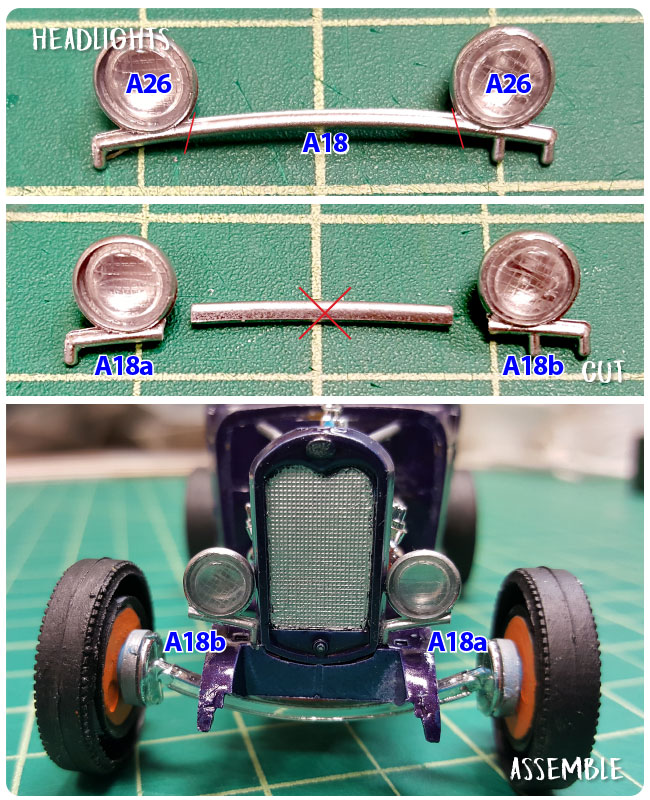
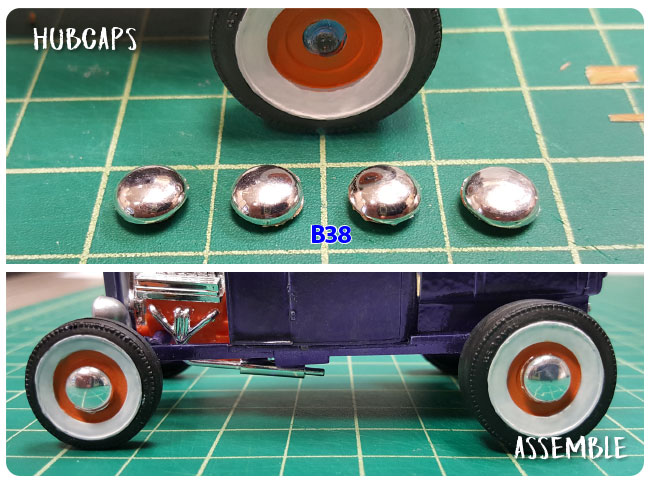
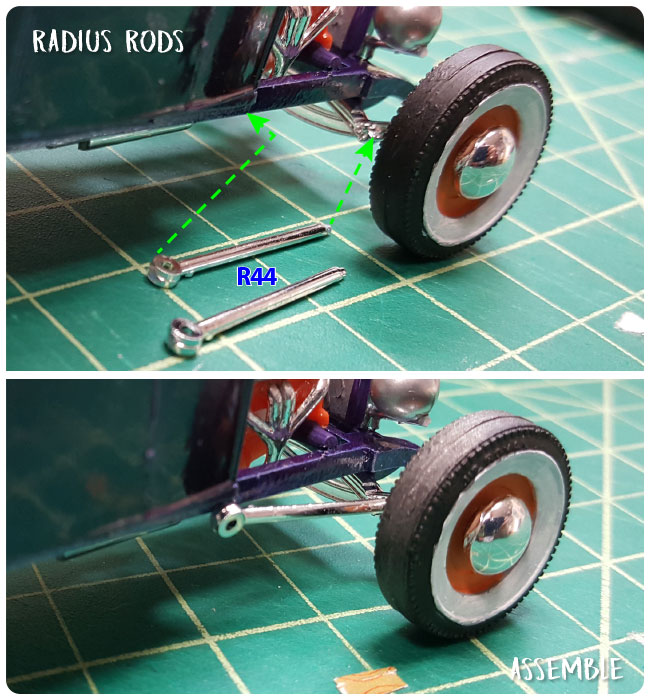
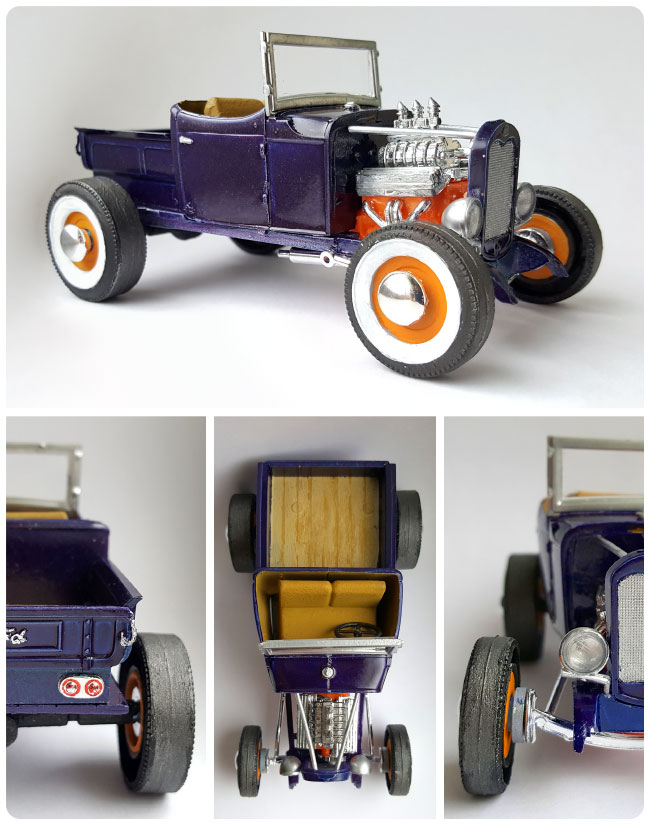
1:32 Kitbash: 1930 Ford Model A Roadster Pickup – Part 2
Goto PART 1
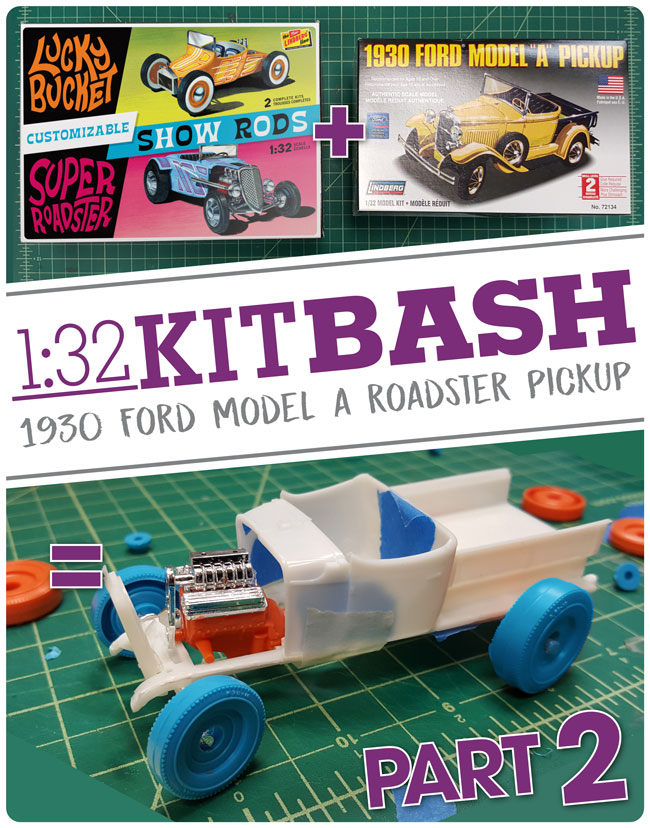
This is part 2 of my 1930 Ford Model A Roaster Pickup kitbash using the Lindberg 1:32 Customizable Show Rod 2-pack and Lindberg 1:32 1930 Ford Model A Pickup.
Above are the parts from each kit that were used. Note that I will reference 1930 Ford Model A Pickup kit part with an “A” in front of the part number, “B” for the Lucky Bucket and “R” for the Super Roadster.
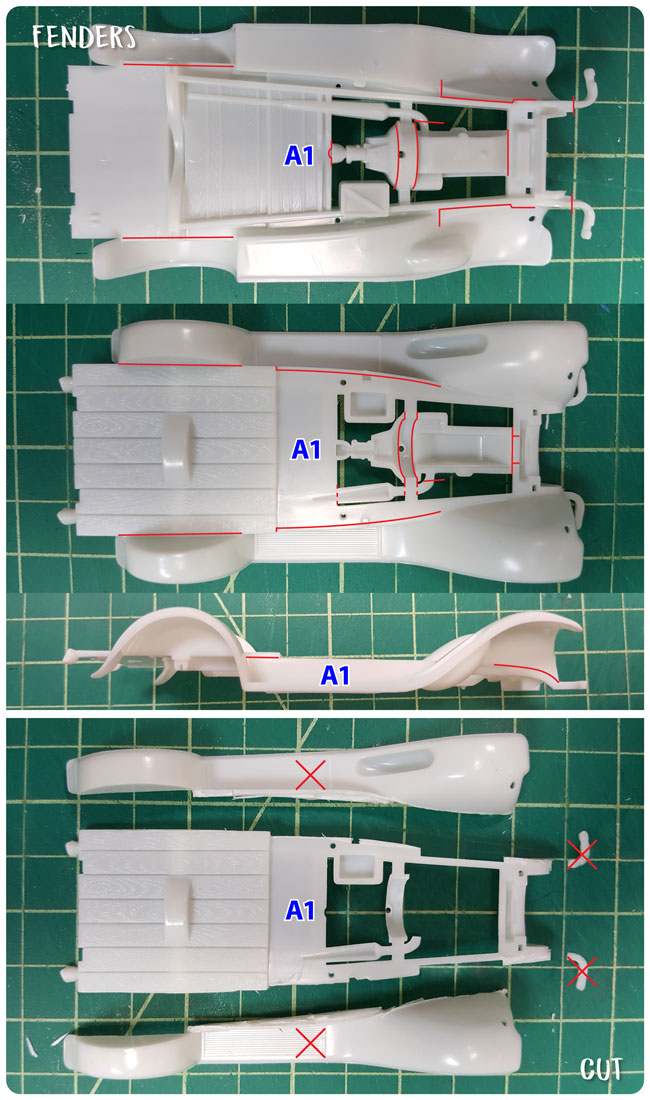
First I removed the fenders from the frame (A1). Cutting along the the red lines as shown above. I discarded the fenders (i.e. set them aside for future projects).
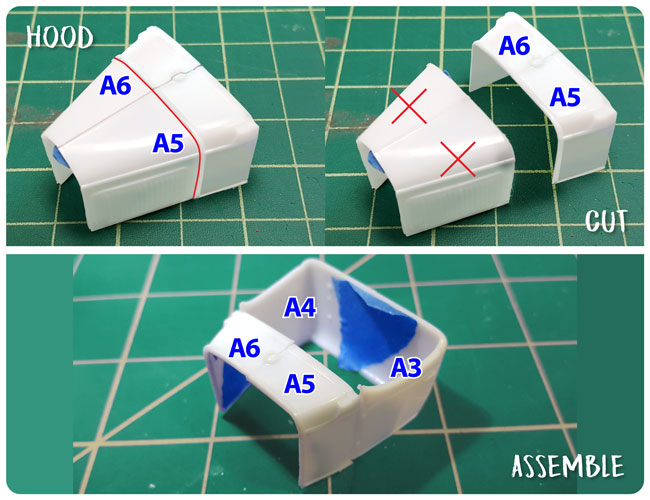
Next I separated the hood from the cowl halves (A5,A6), cutting along the red line. The hood halves were not used on this build, so discard. The cowl halves (A5,A6) and the body sides (A3,A4) were then glued together.
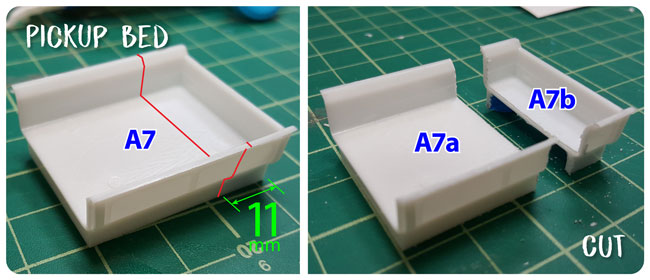
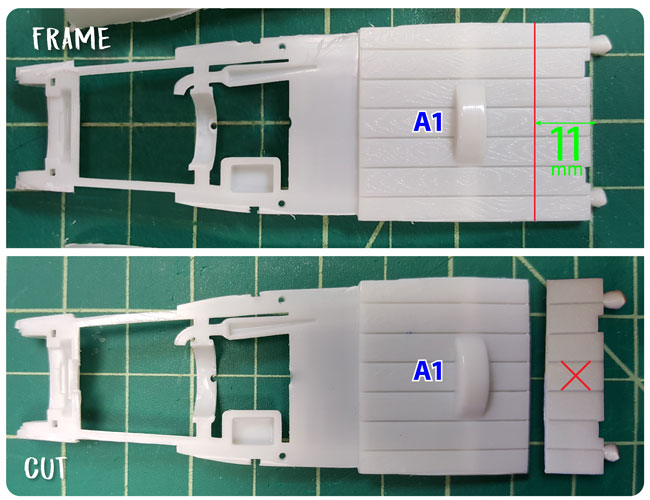
I wanted to shorten the pickup bed (A7). The excess is be used in next step, so you would need to remove at least 7mm, I went with 11mm. I will refer to the halves now as parts A7a and A7b. I also trimmed 11mm off the bed on frame (A1). The excess from A1 is discarded.
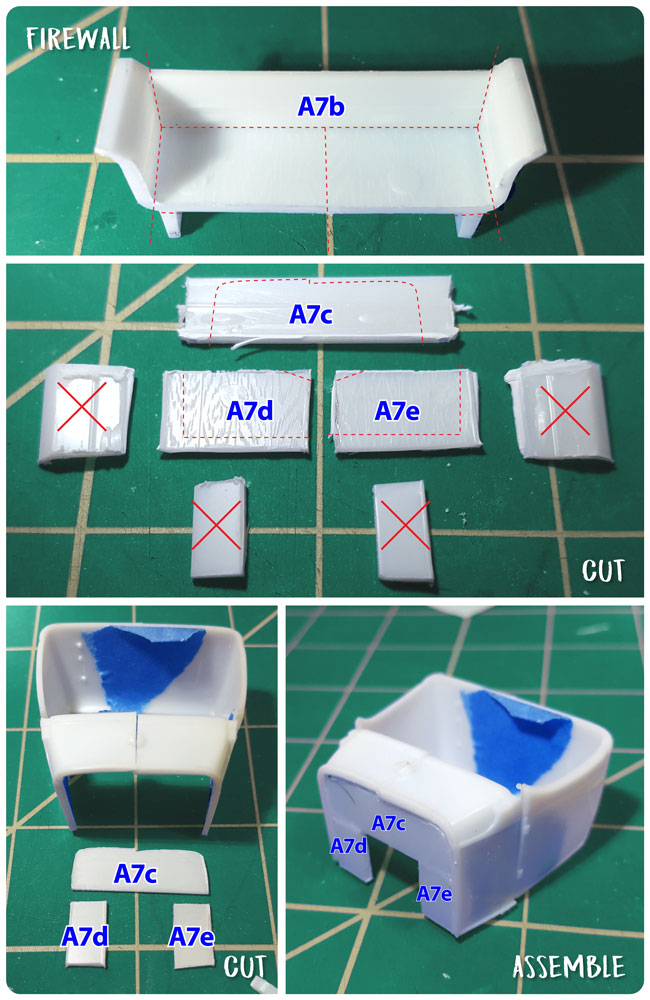
The body (A3+A4+A5+A6) is missing a firewall so I used part A7b to create it. I cut it into the pieces shown above and then cut 3 pieces down to fit in the cowl (A5+A6). The pieces were about 7mm wide and A7c was cut to fit the curve of the cowl. Parts A7c, A7d and A7e were glued to the body.
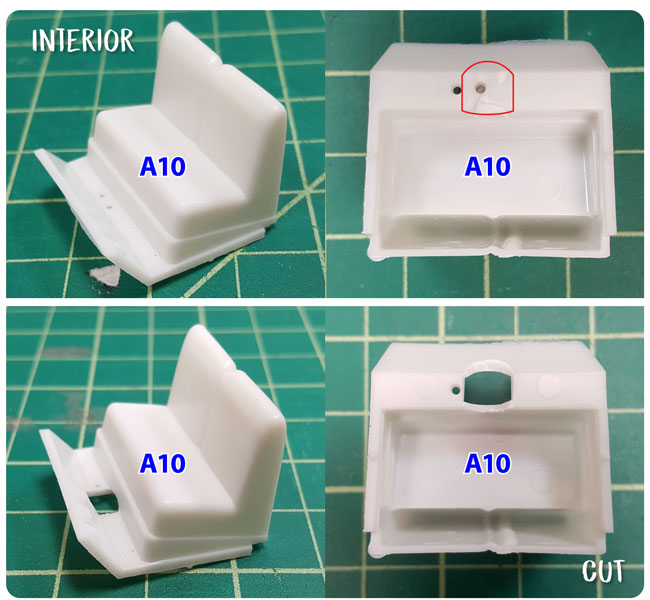
Next I cut a “hole” in interior’s floor (A10) to make room for the drive shaft (R30) from the Super Roadster.
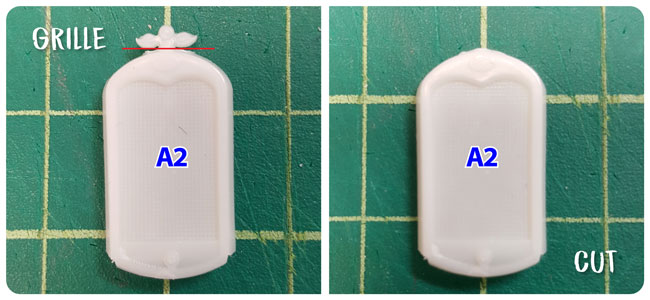
I cut the hood ornament from the grille (A2). I didn’t like it.
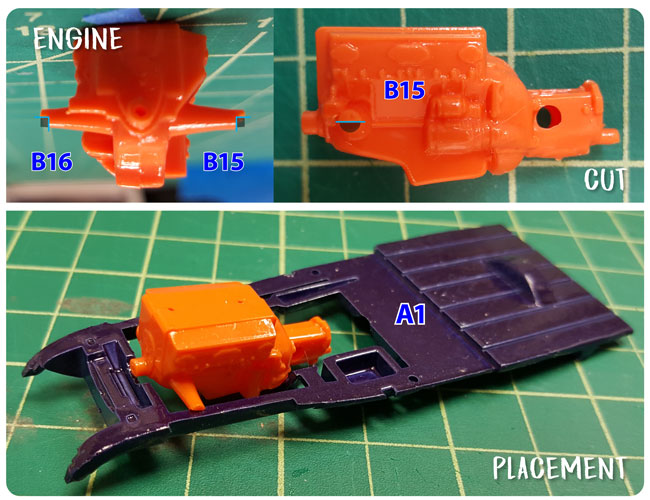
I used the motor halves (B16,B15) from the Lucky Bucket. I cut a half circle from the end of the support rods that enable the engine to sit perfectly in place on the frame (A1) with very little modification. Note I had to cut a half circle notch off the frame at the front of the engine to leave room for the belt (B43). For the motor assembly I used the “Rear Mill Bucket” version, option B on the instructions for the Lucky Bucket, but with different exhaust. I will show this in my next post.
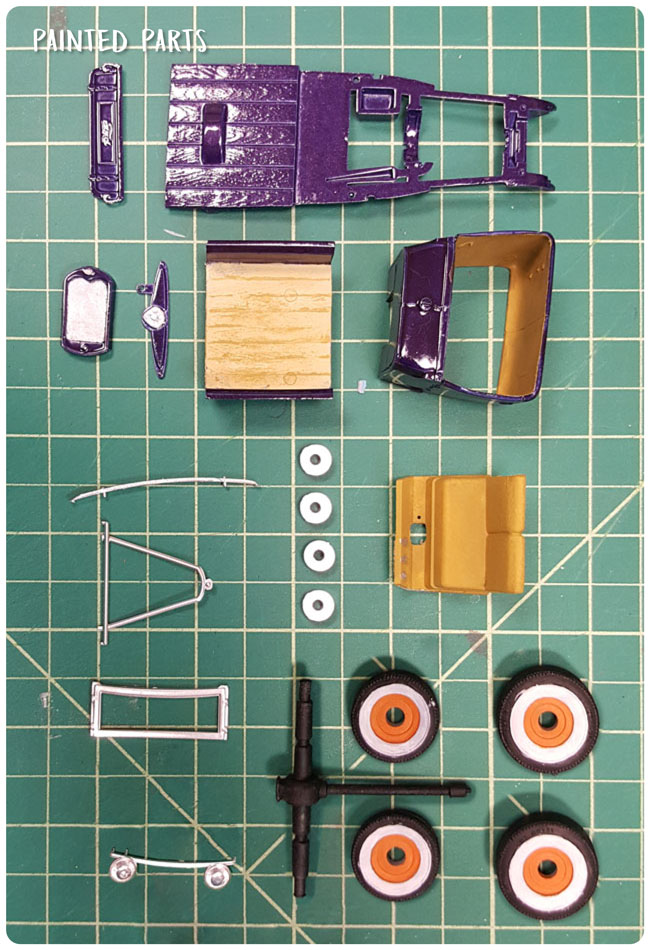
Next I painted the parts as shown above. My paint scheme was inspired by the vintage Lindberg Freaky Ford kit. (as mentioned in Part 1) I painted the frame (A1), body (A3+A4+A5+A6), dash (A17), bed (A7a), grille (A2), and tail gate (A8) a metallic grape purple, first hitting them with a dull medium blue then the purple to give the color a little more depth. I painted the wood planks on the bed to look like wood and the grille and gauges chrome. The interior of the cab and the seats were painted tan. The front radius rod (A12), headlight assembly (A18), bumper (A20), windshield frame (A9) and 4 wheel hubs (R55) were painted chrome. The small front wheels (R27,R28), rear wheels (R32,R33) and drive shaft were painted black. The rims on the wheel were painted orange and whitewalls were added.
Look for my next post for final modifications and assembly.
1:32 Kitbash: 1930 Ford Model A Roadster Pickup – Part 1
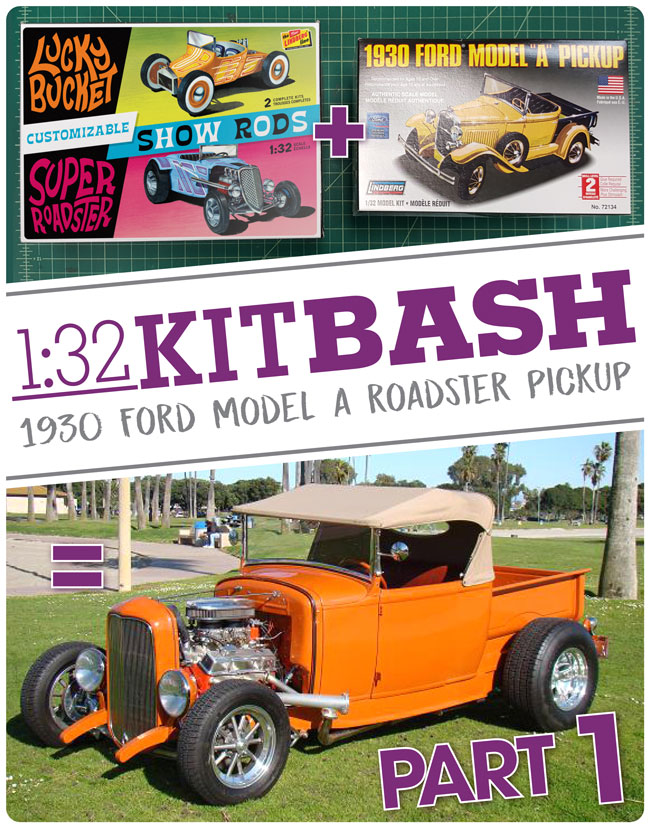
As mentioned in a previous post the Lindberg 1:32 Customizable Show Rod 2-pack will be out soon and one of the cool features is the many parts that can be used to customize the kits – 125 parts to be exact! The kit includes instructions to build the 2 cars in three different ways but with the parts being interchangeable you could customize many more.
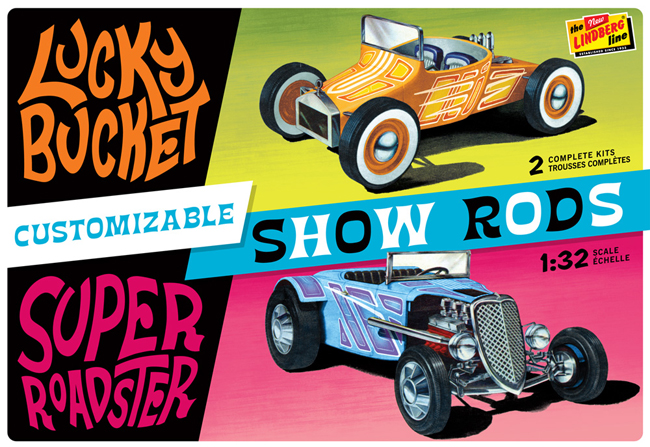
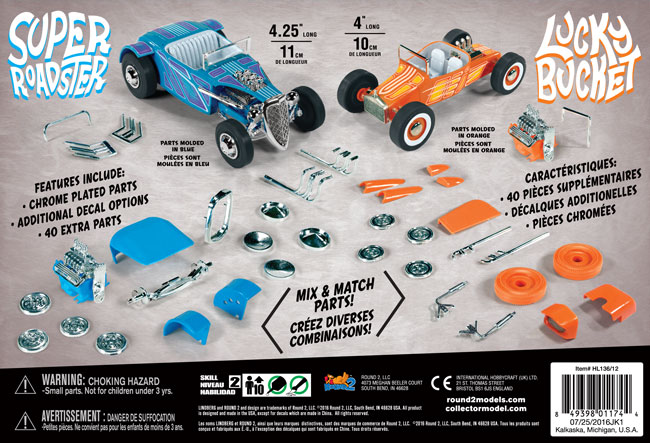
Often not seen in 1:32 car kits are detailed engines and the Show Rod kit includes 2. I realized the Lindberg line has many older 1:32 releases that could be kitbashed with the Show Rods. My goal is to use the parts in the new release to customize the Lindberg 1:32 1930 Ford Model A Pickup, item number 72134. For the paint inspiration I will use the 1975 boxart of Lindberg 1:24 Freaky Ford. Check out my next post to see my progress.
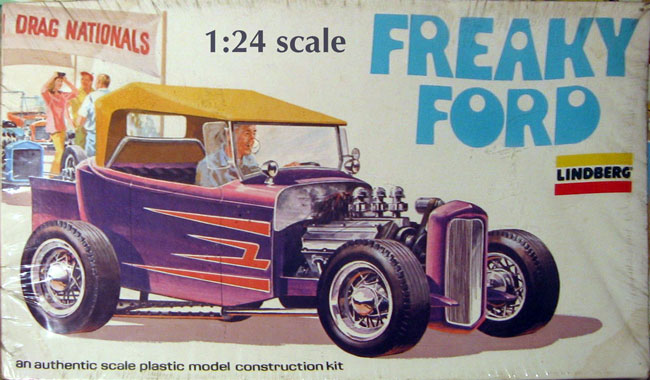
Save

